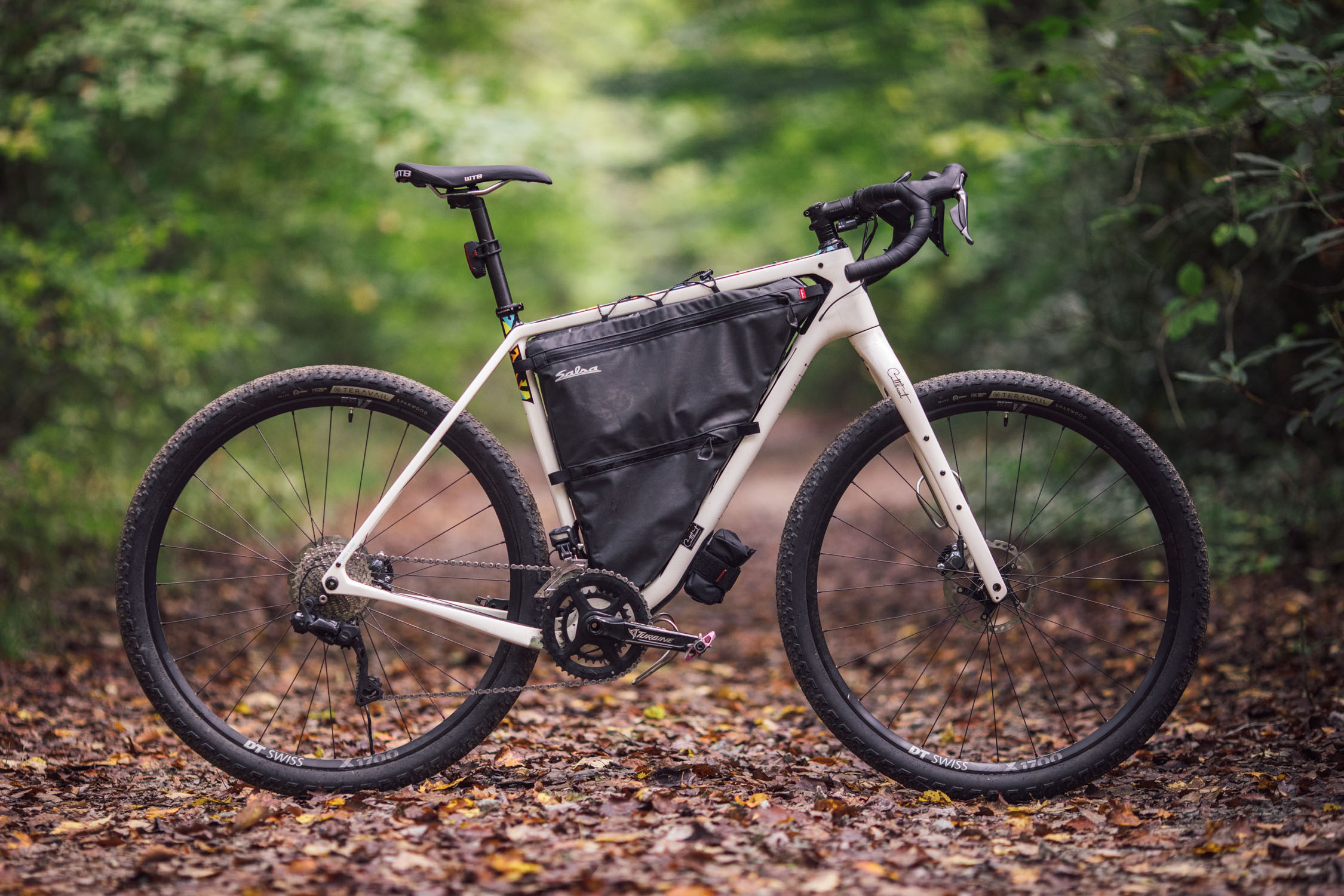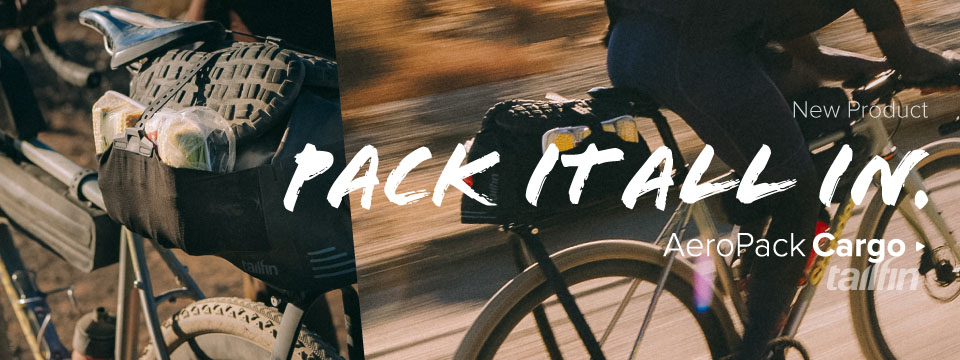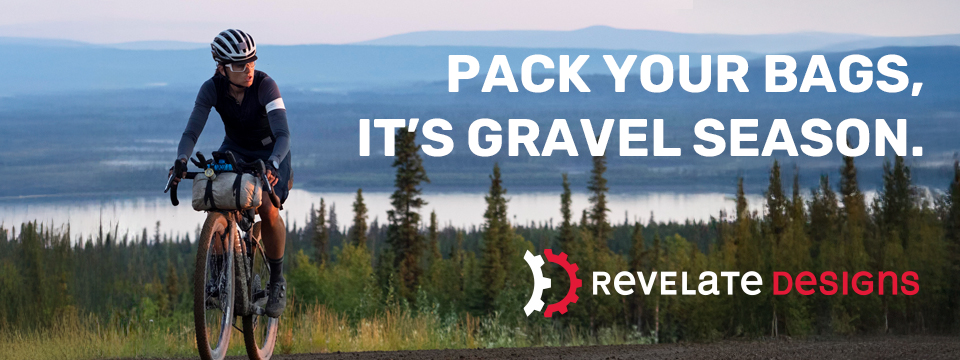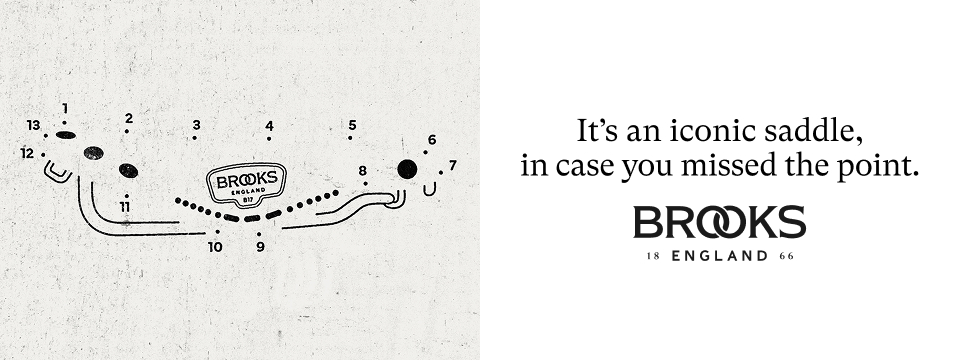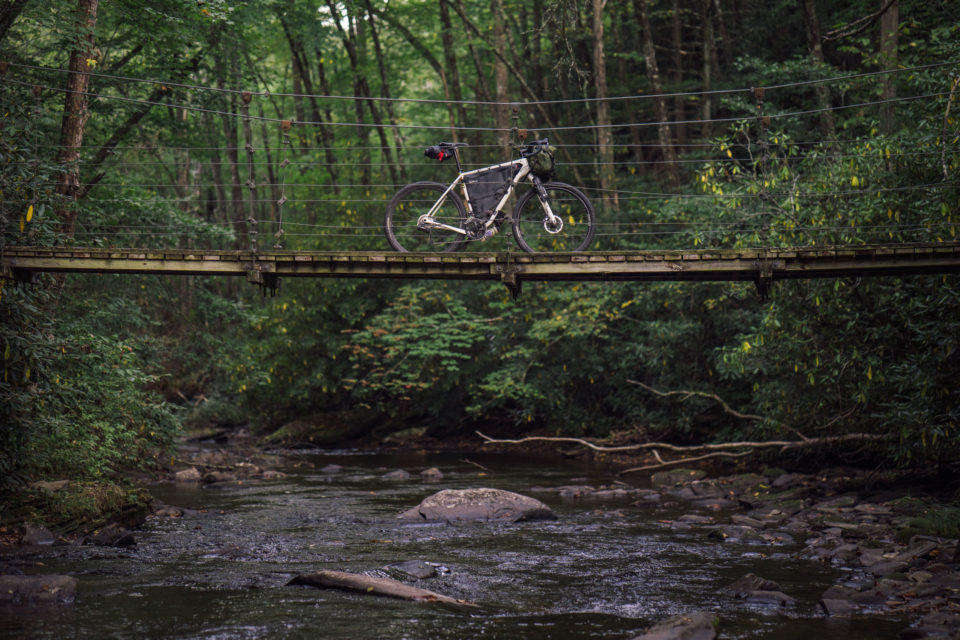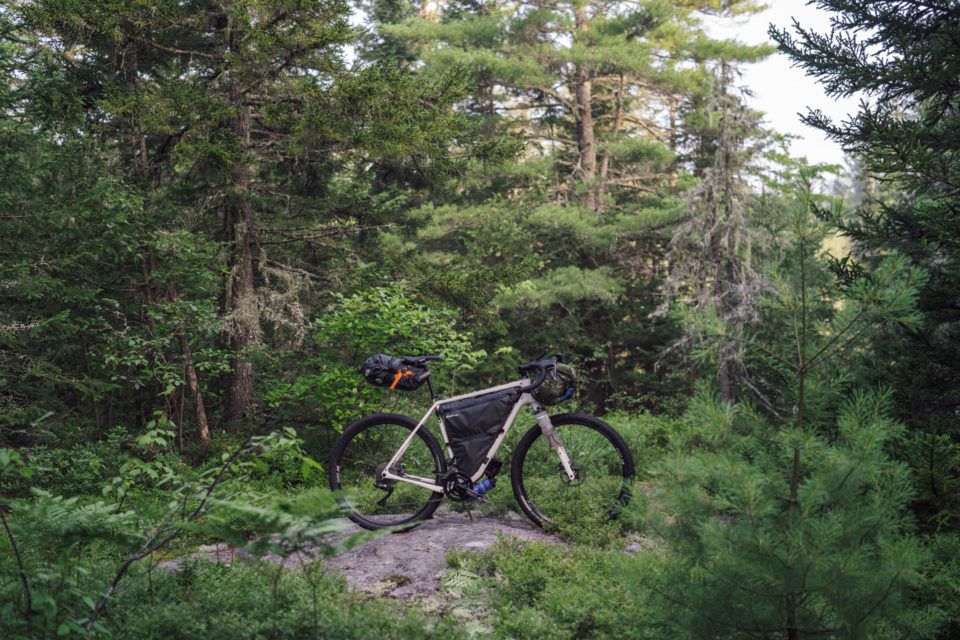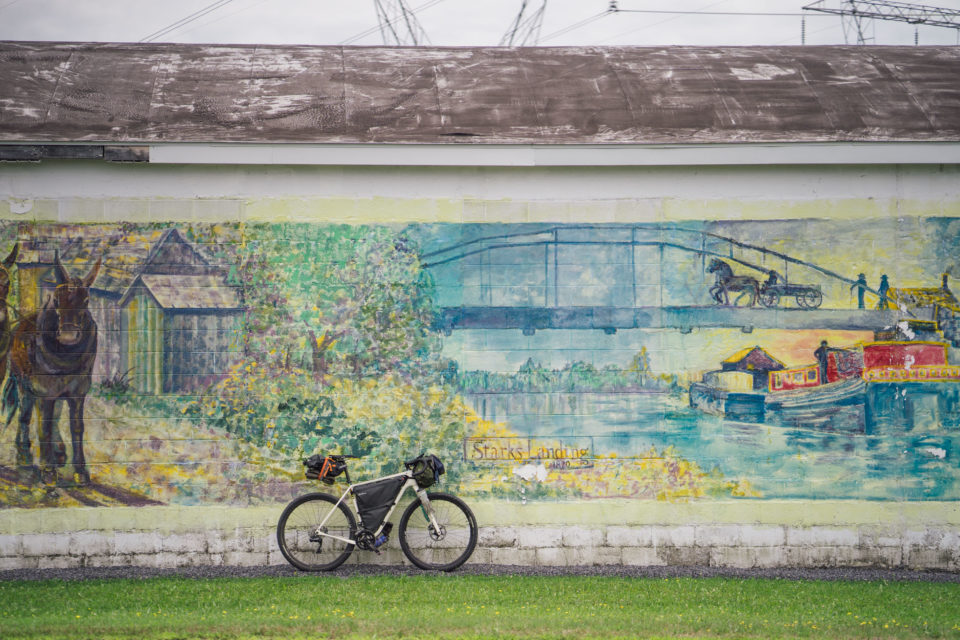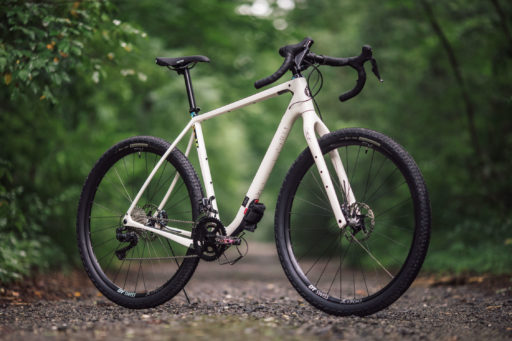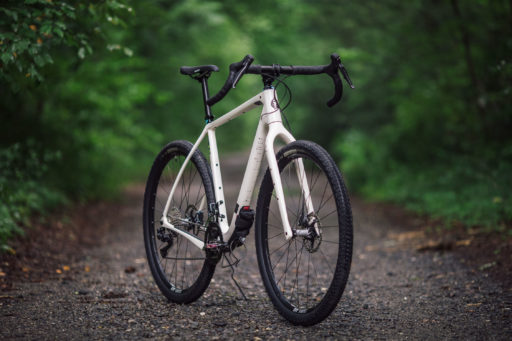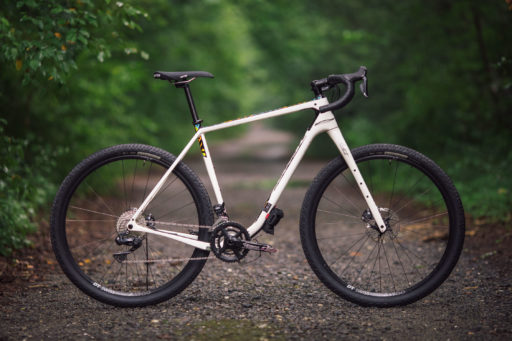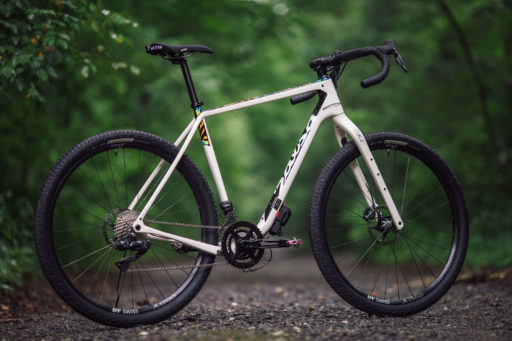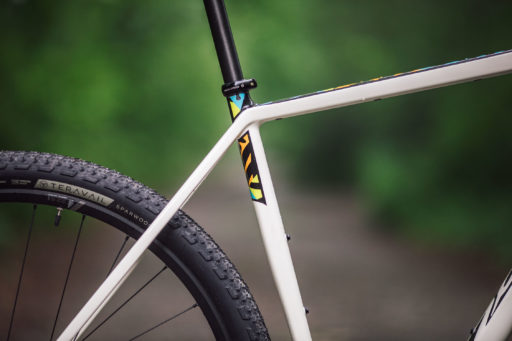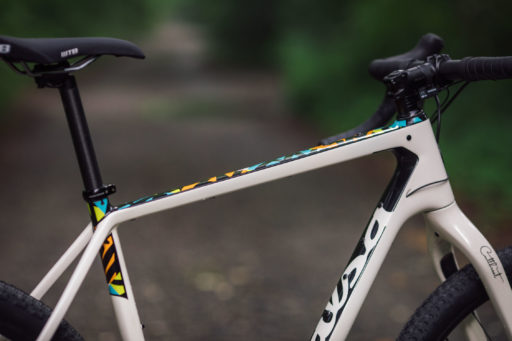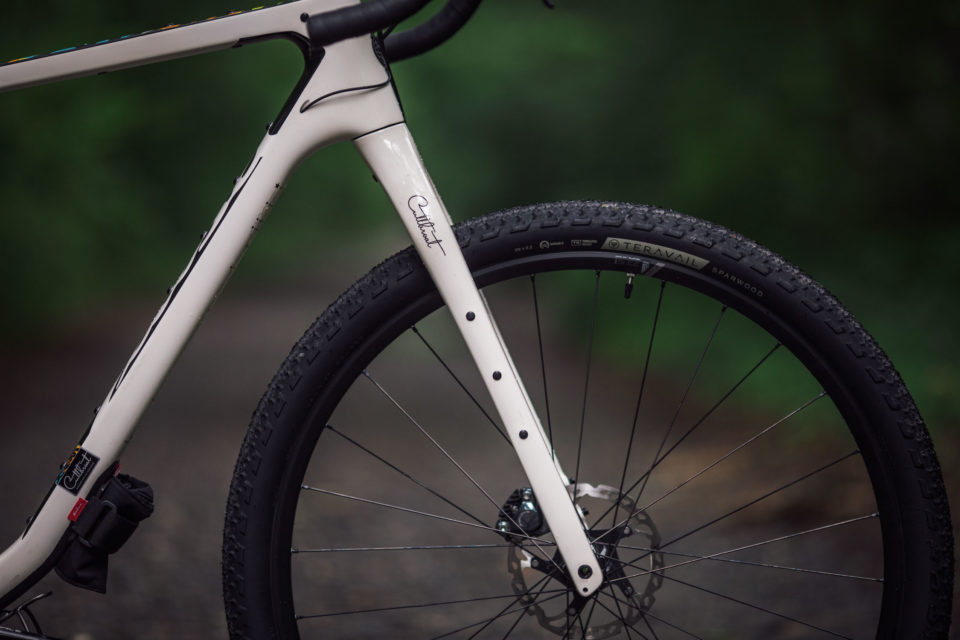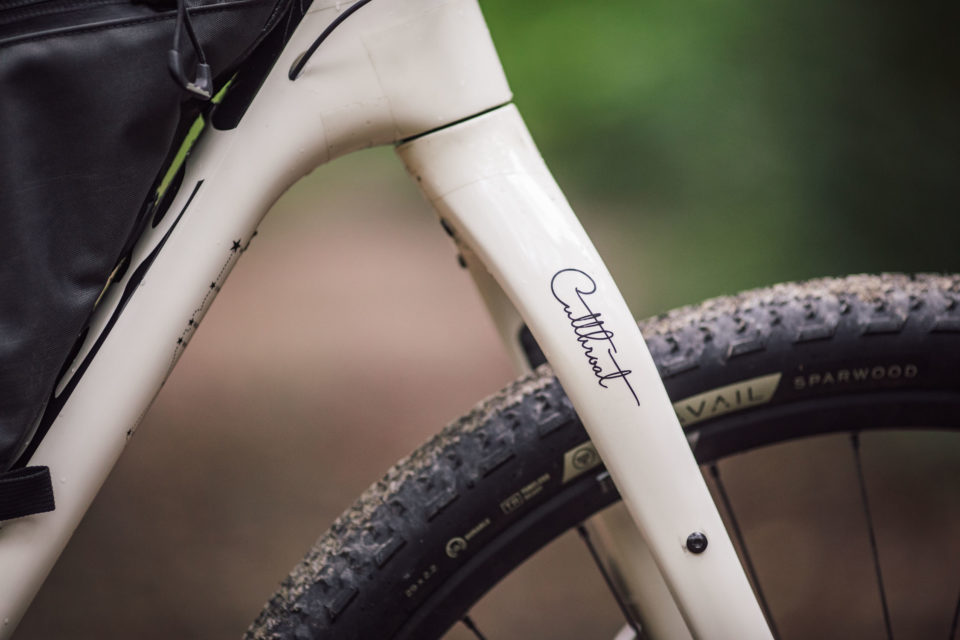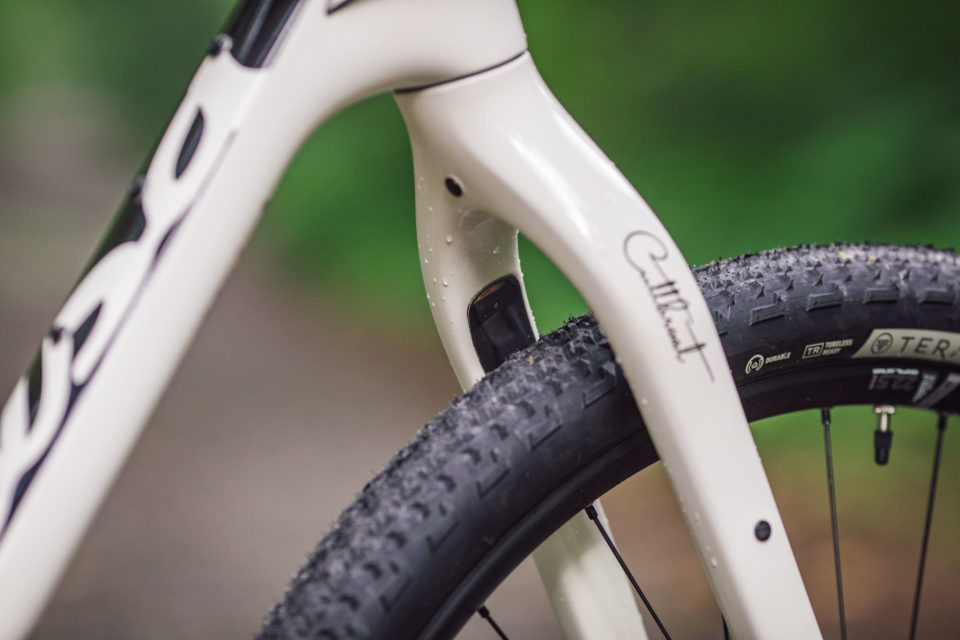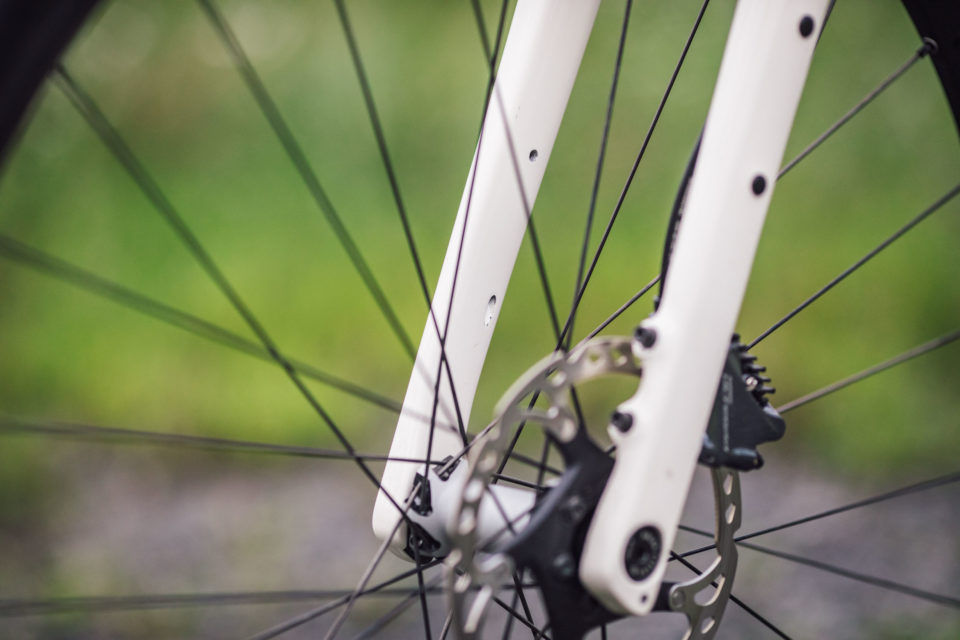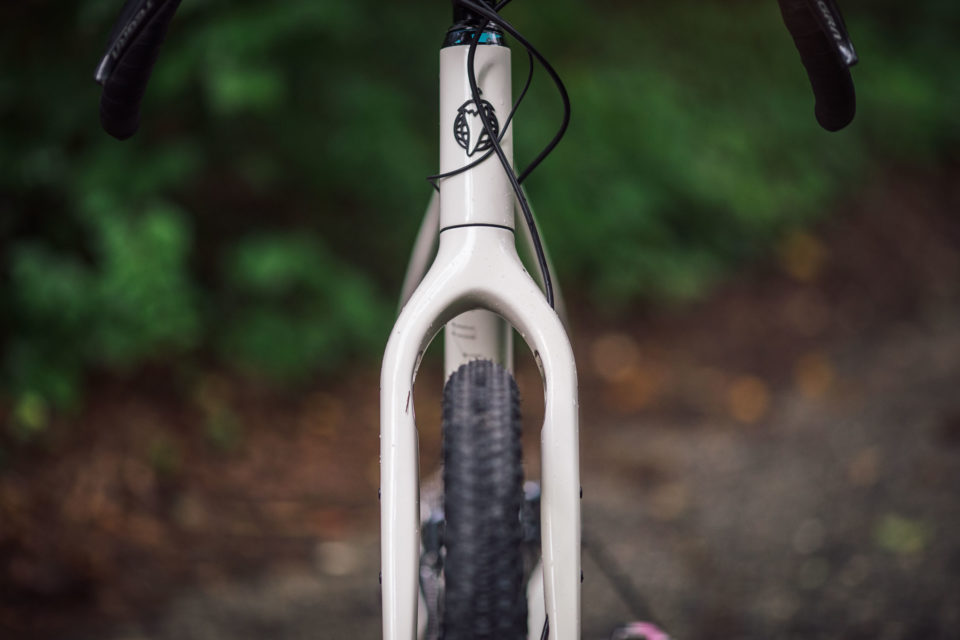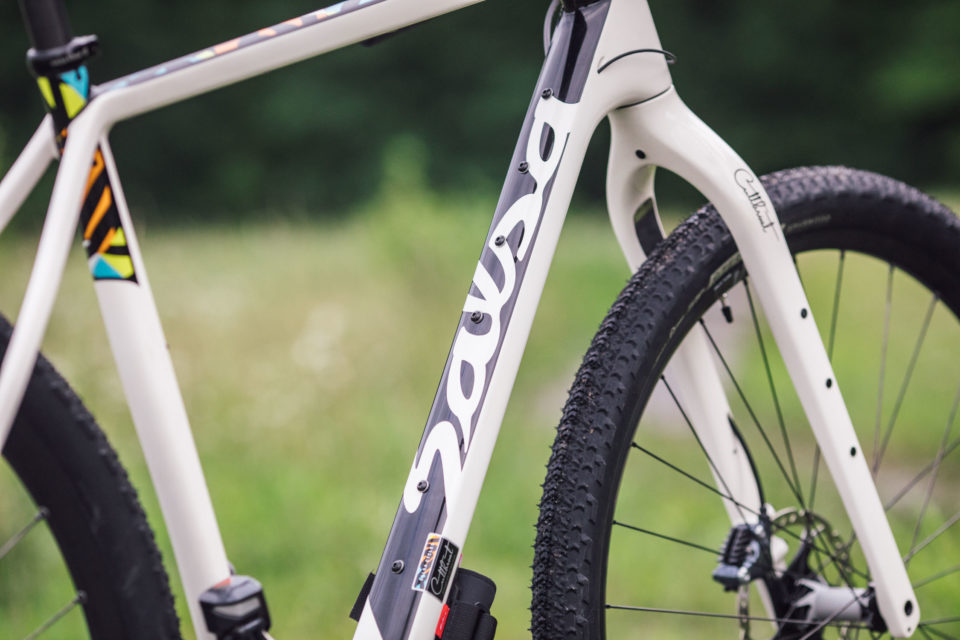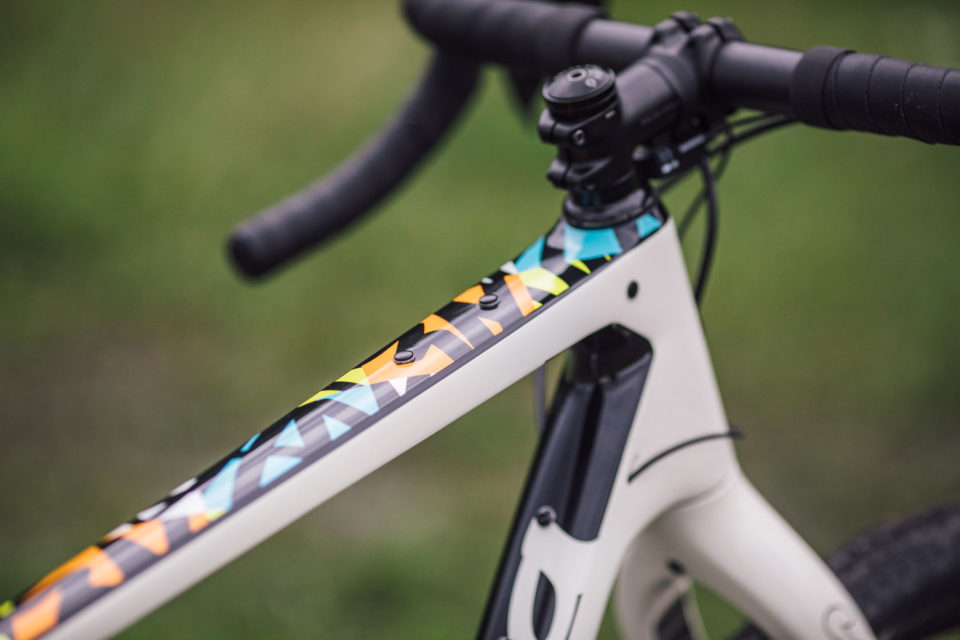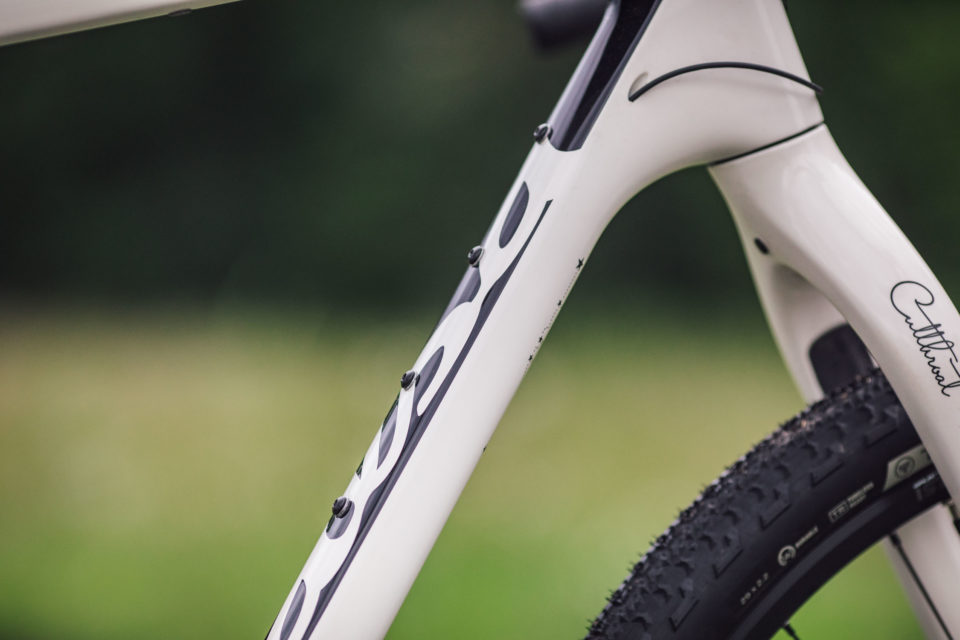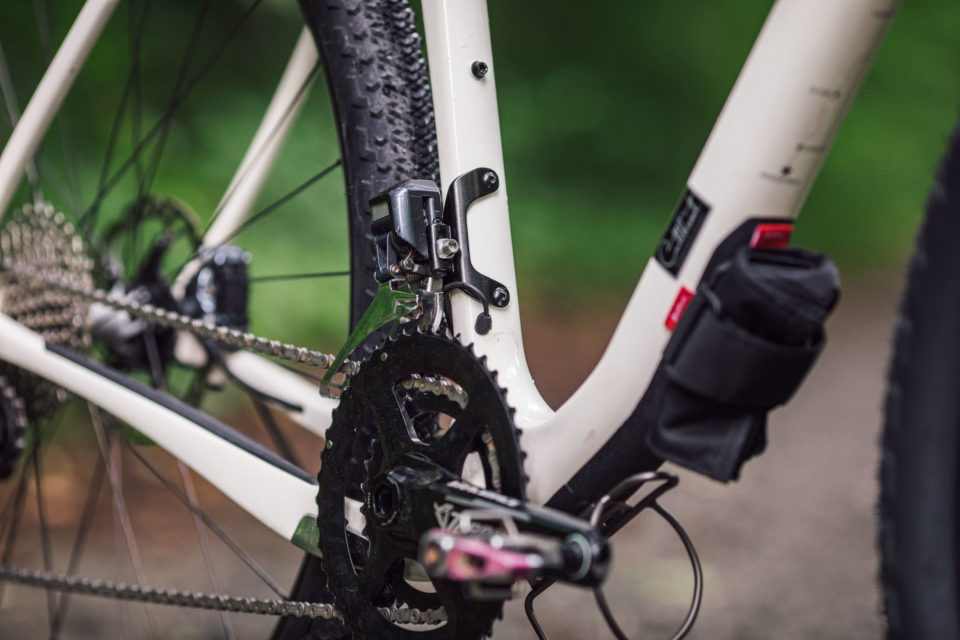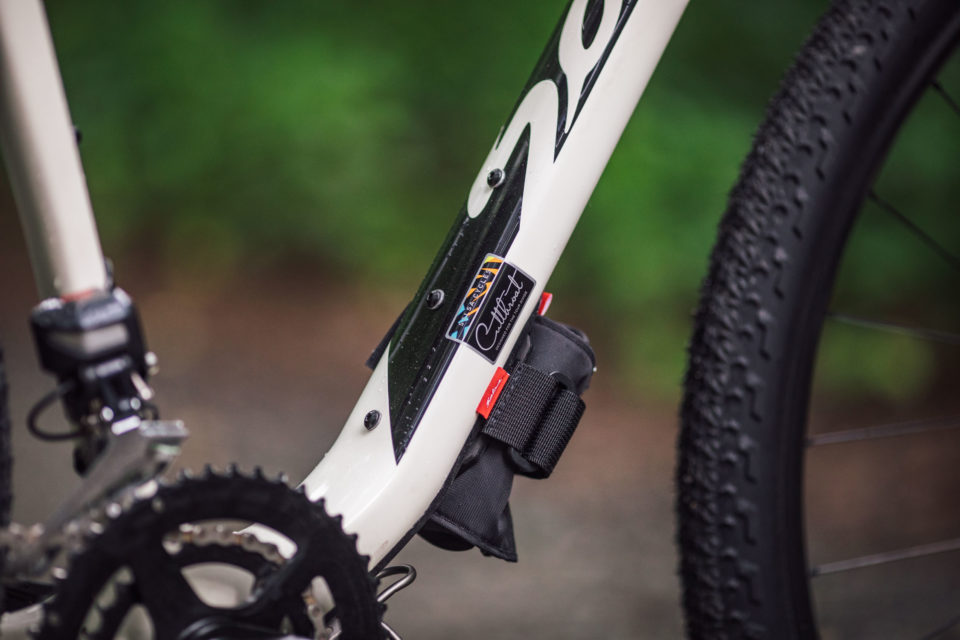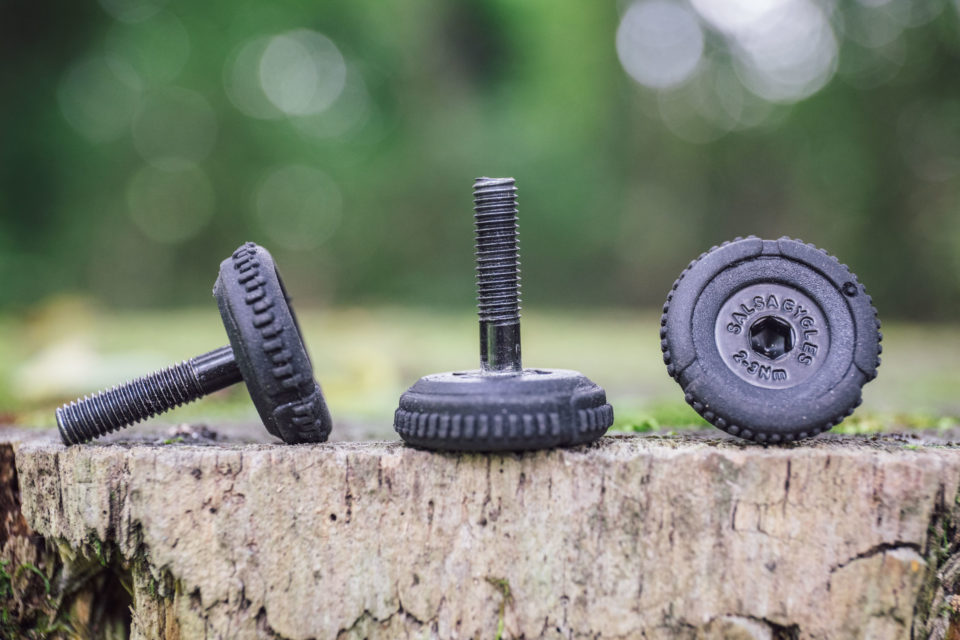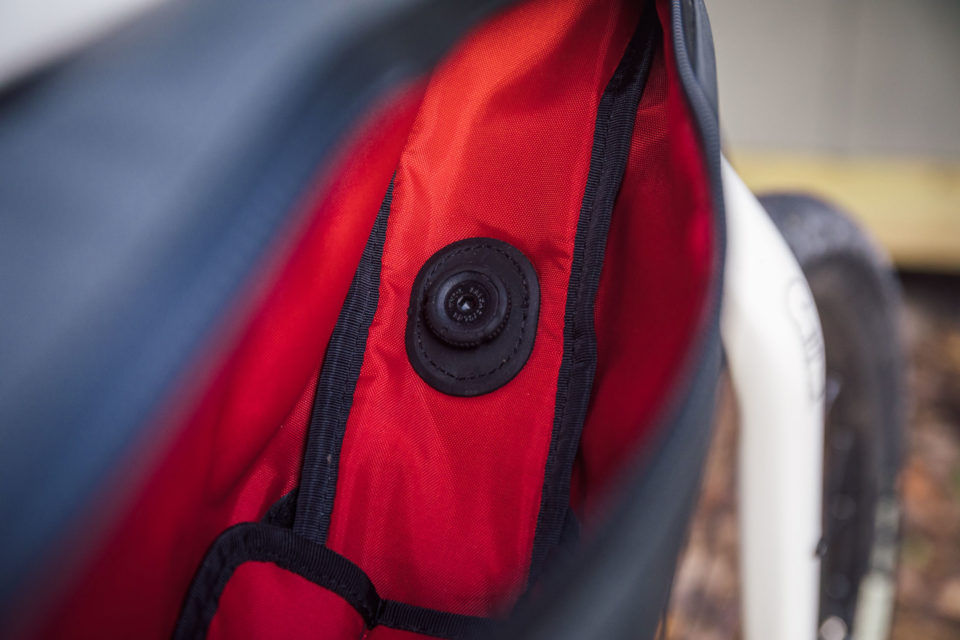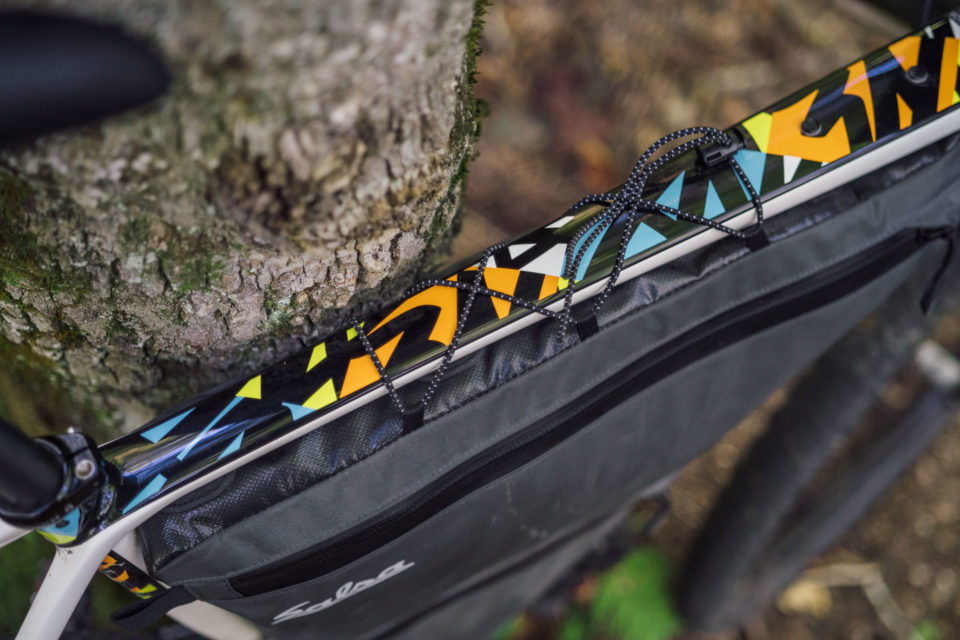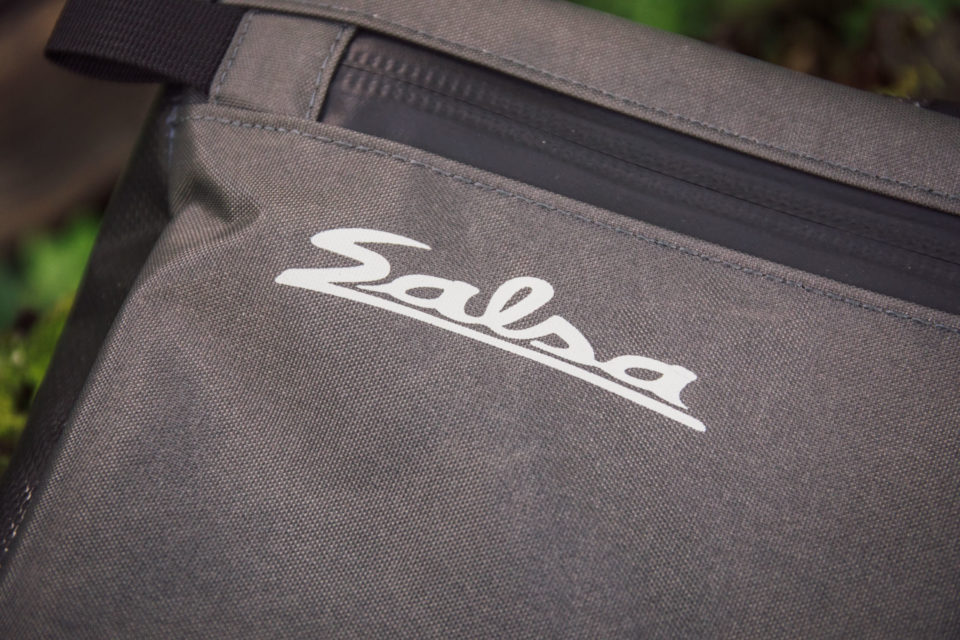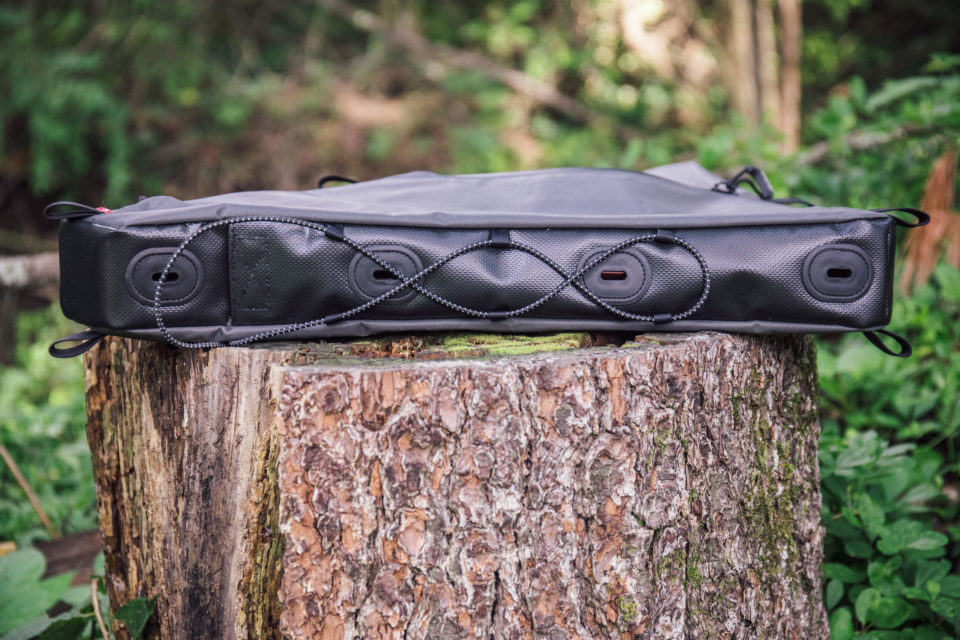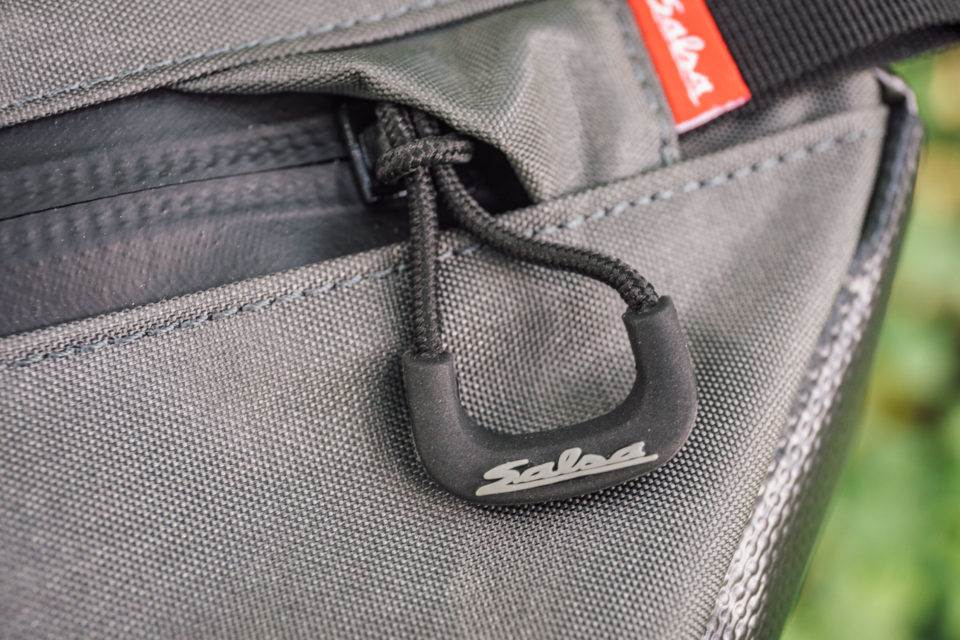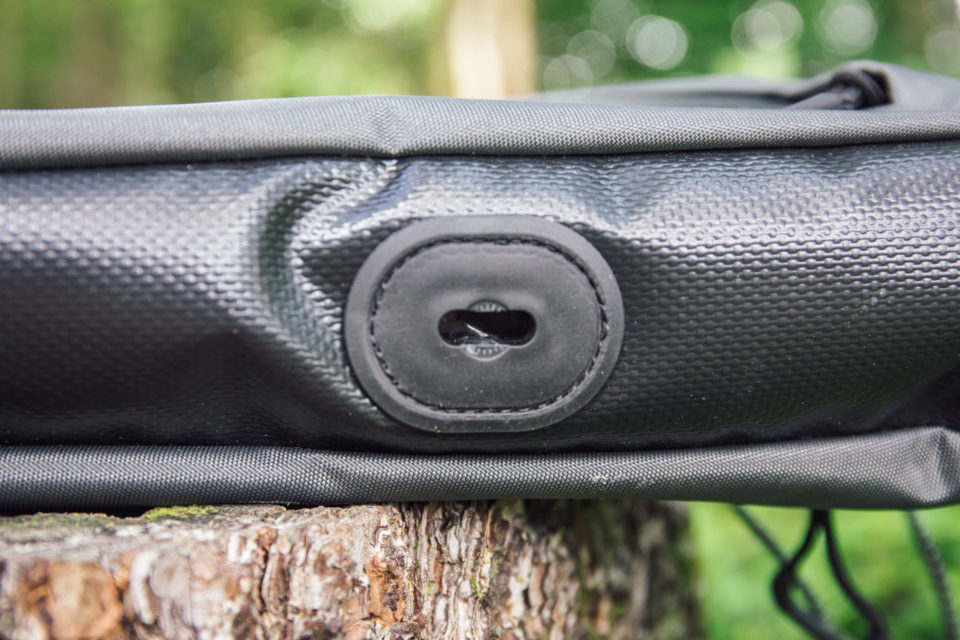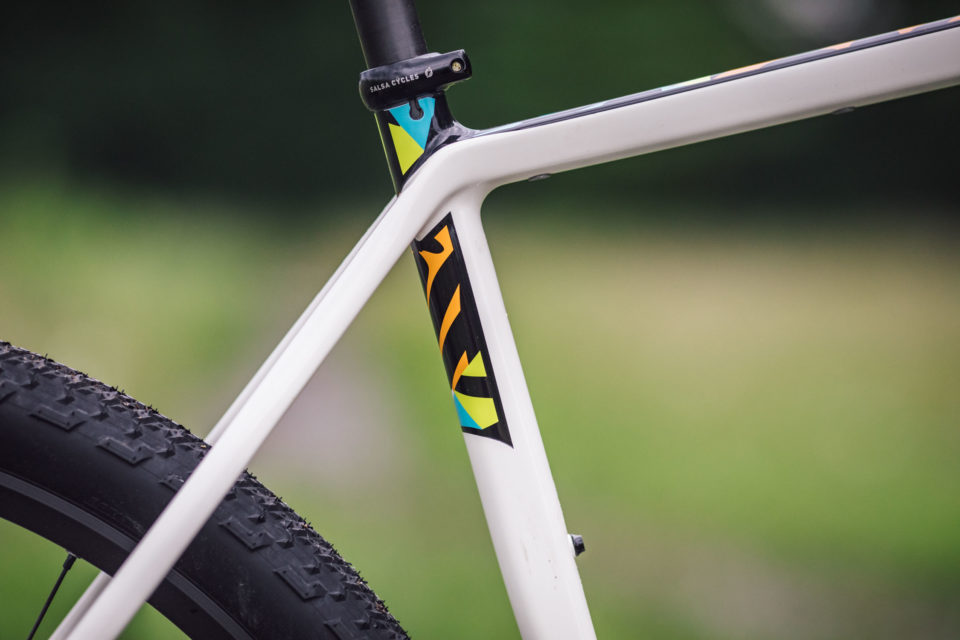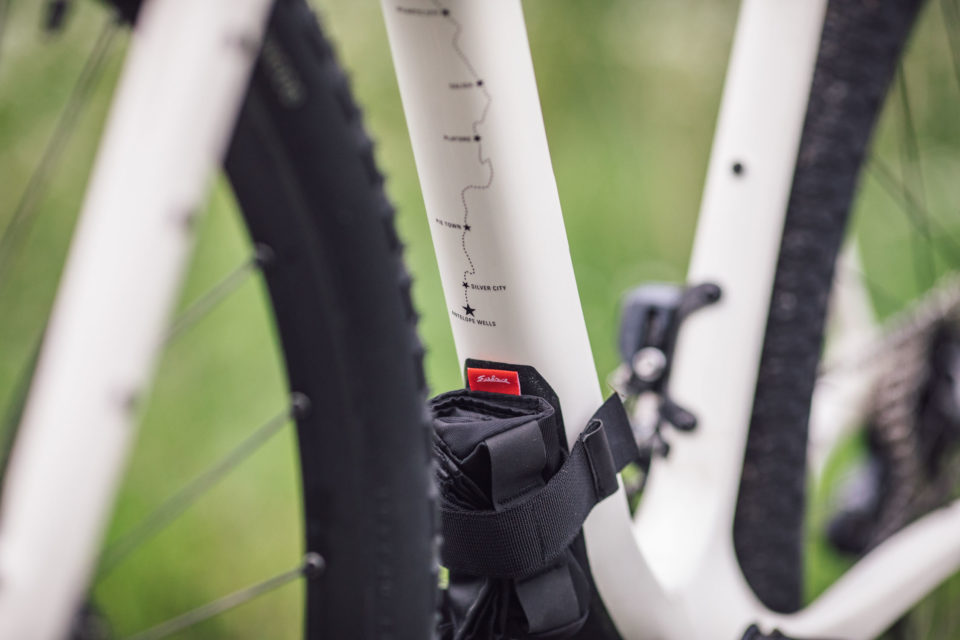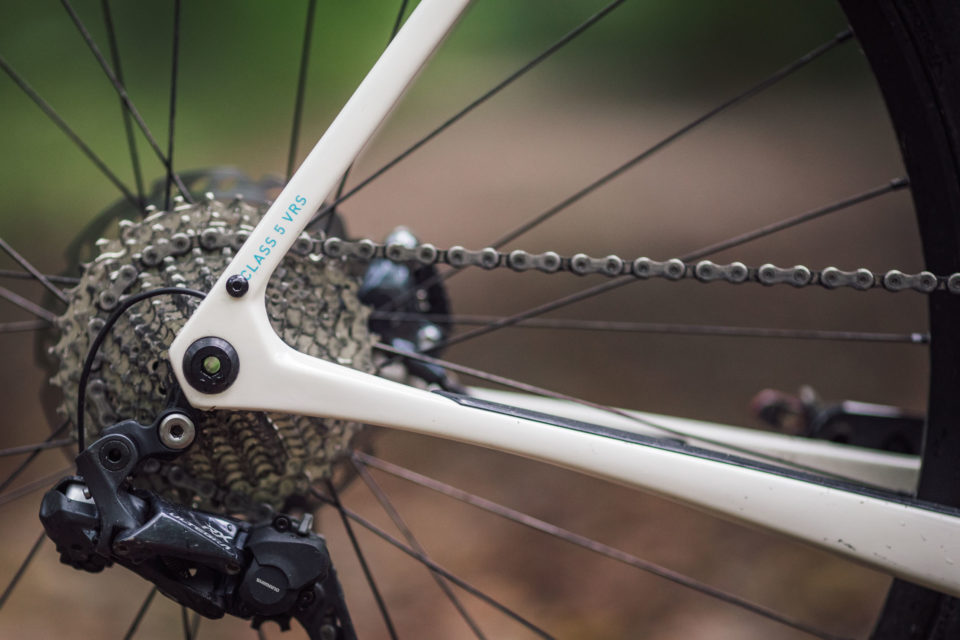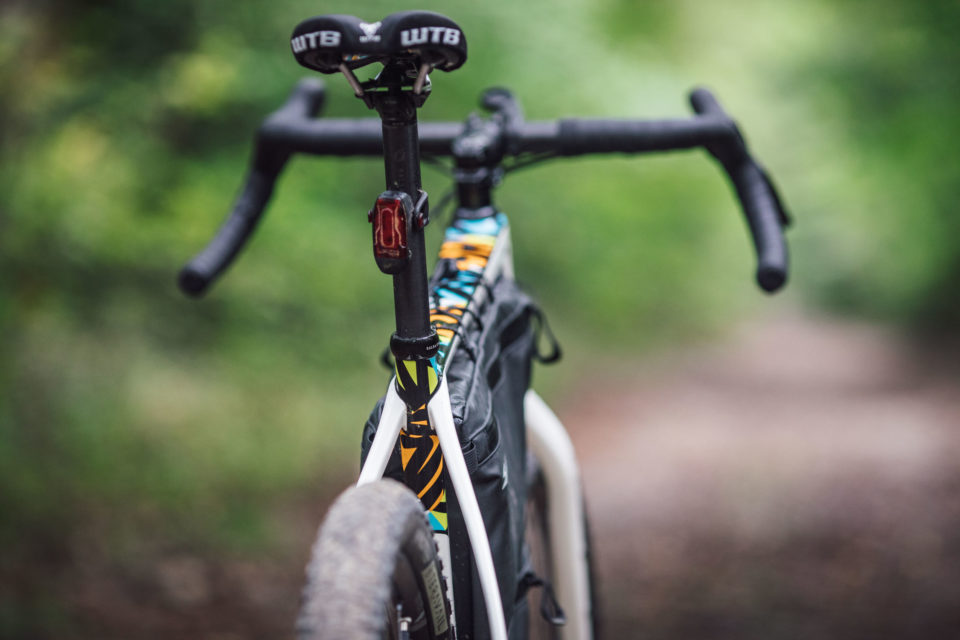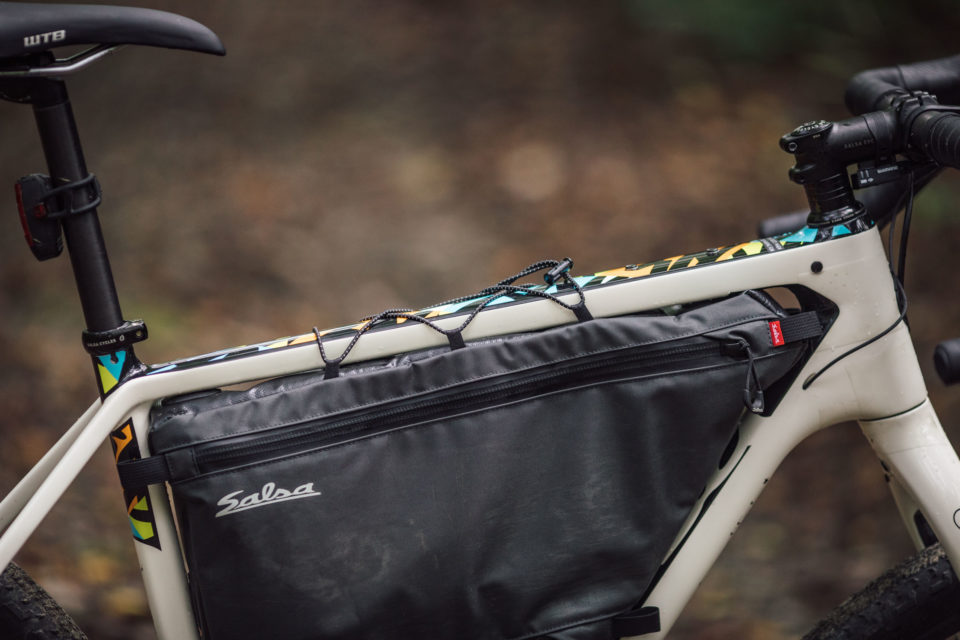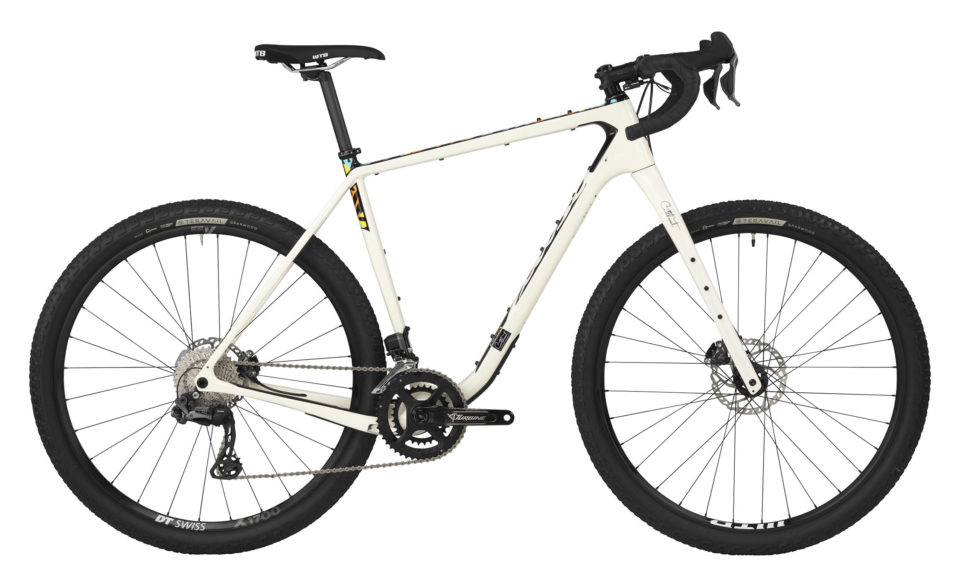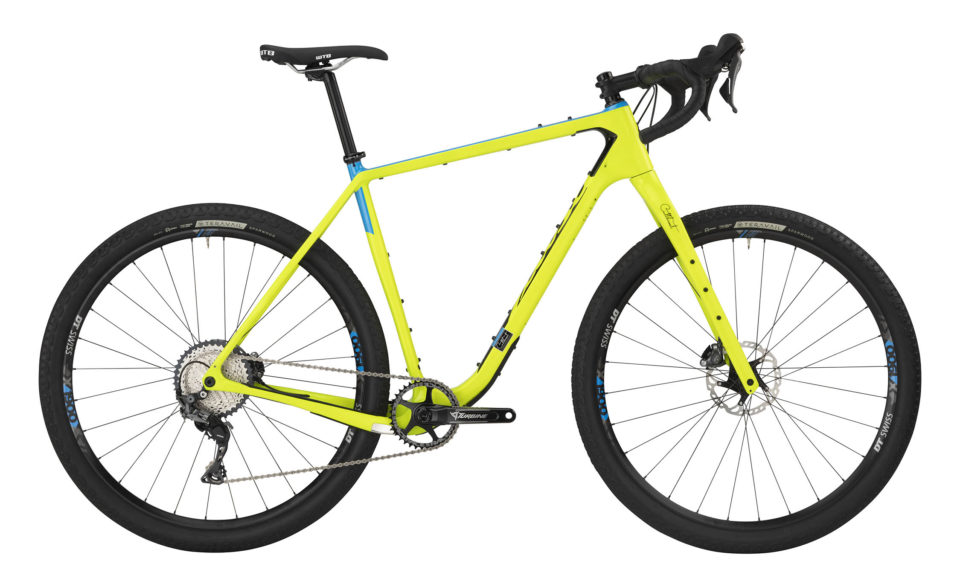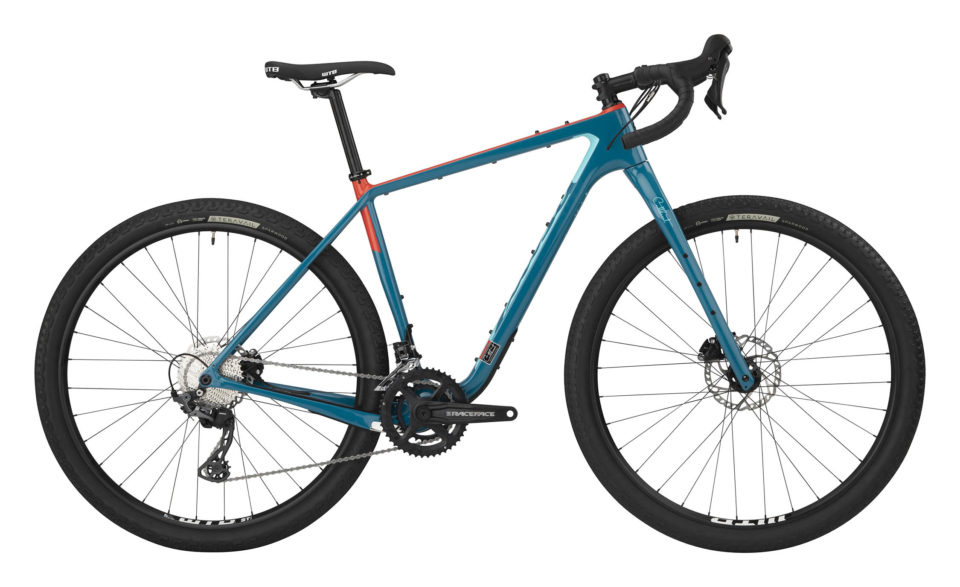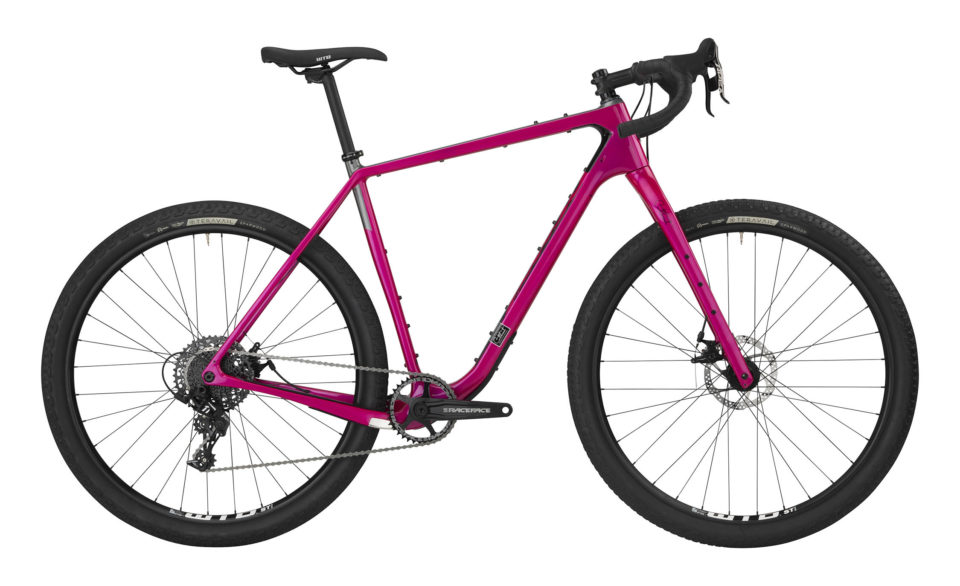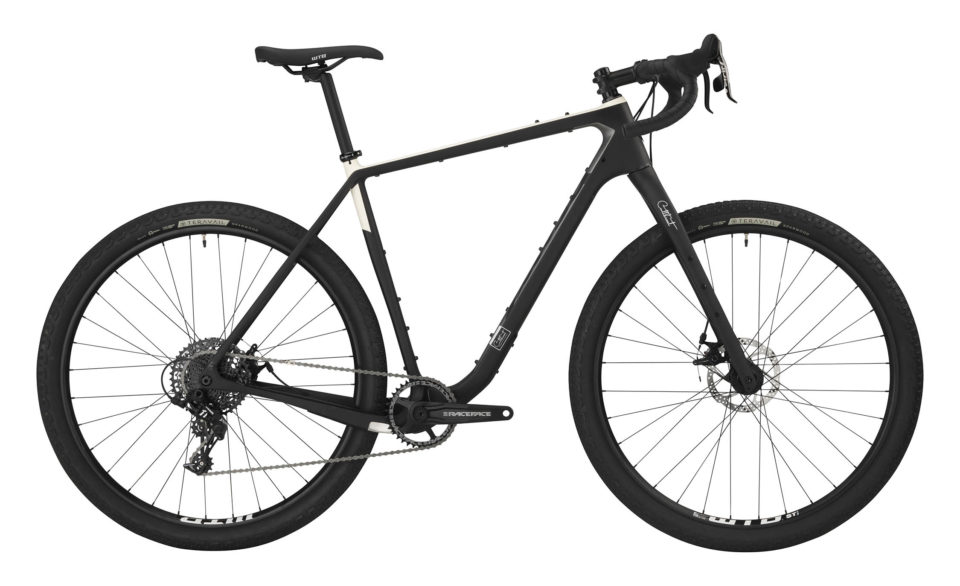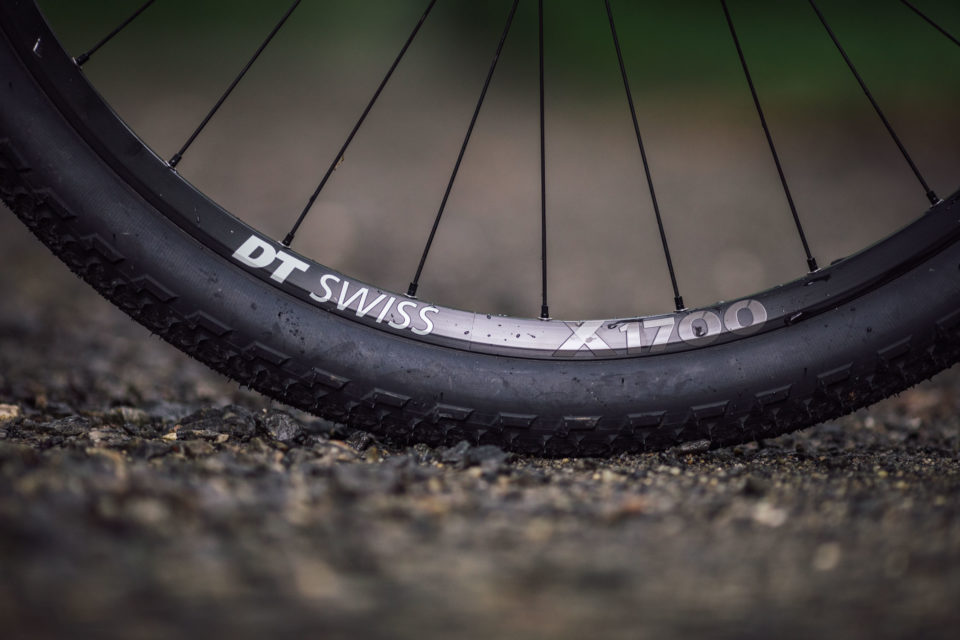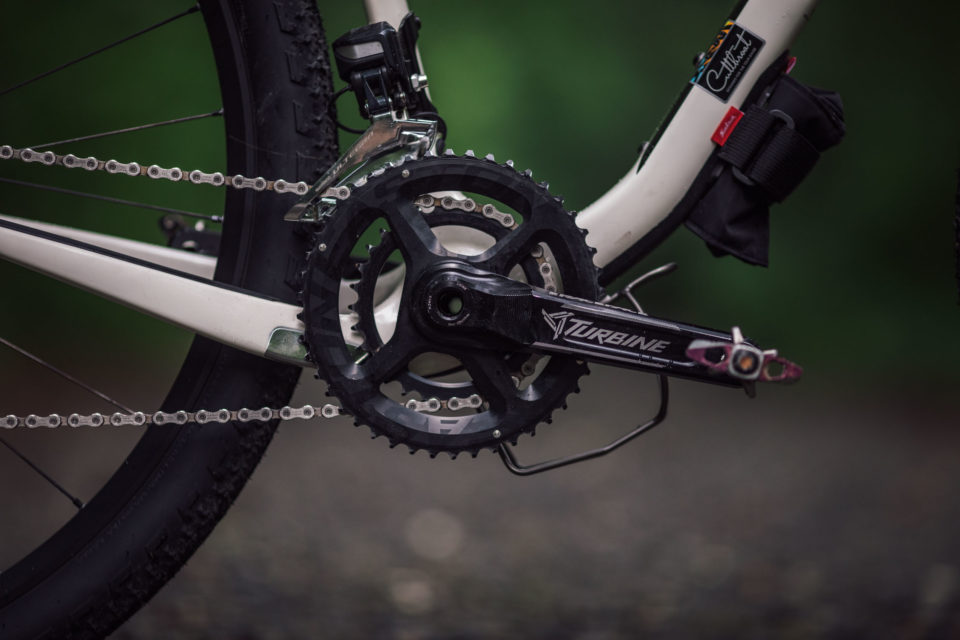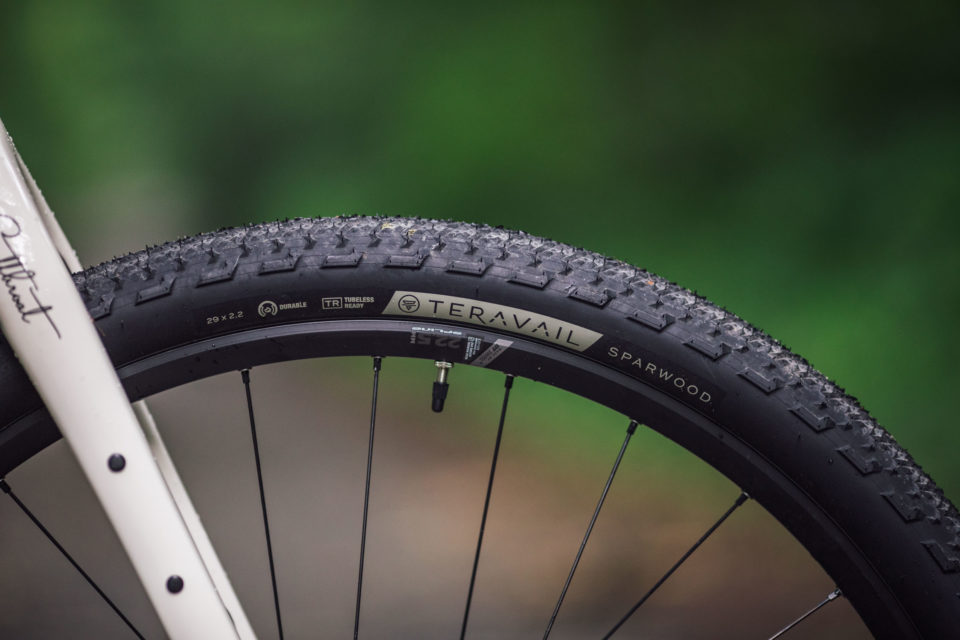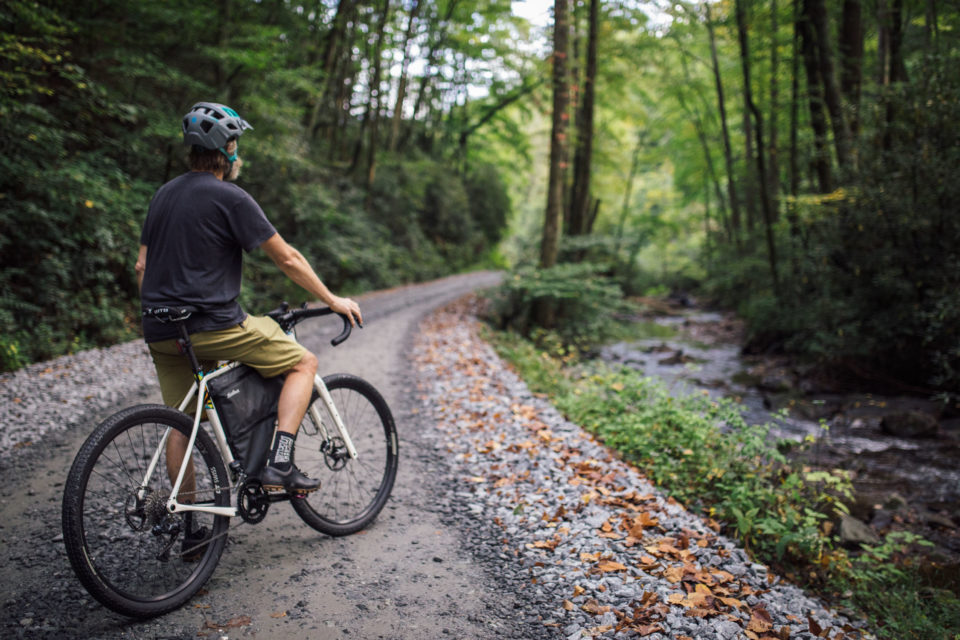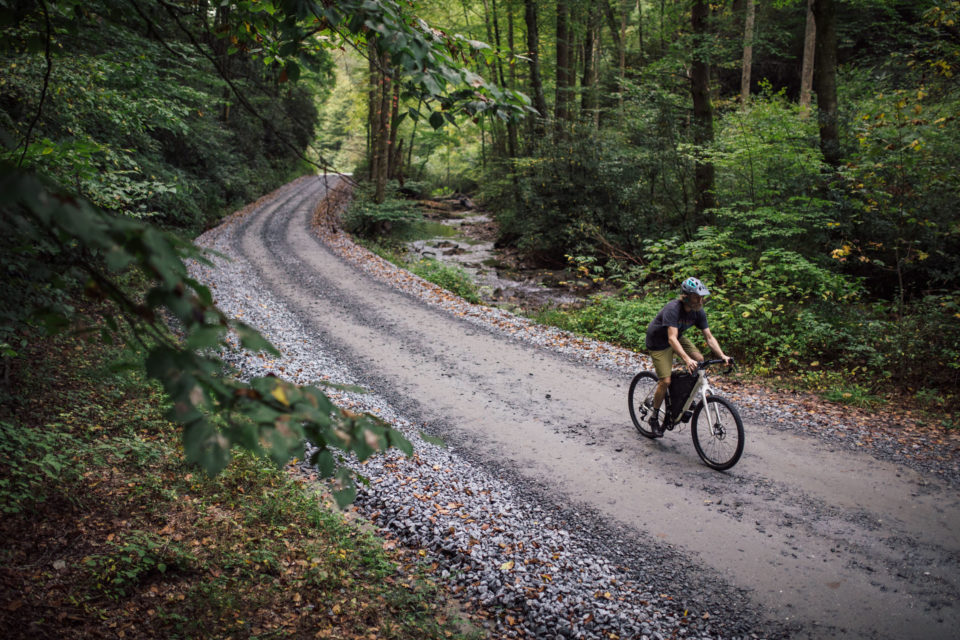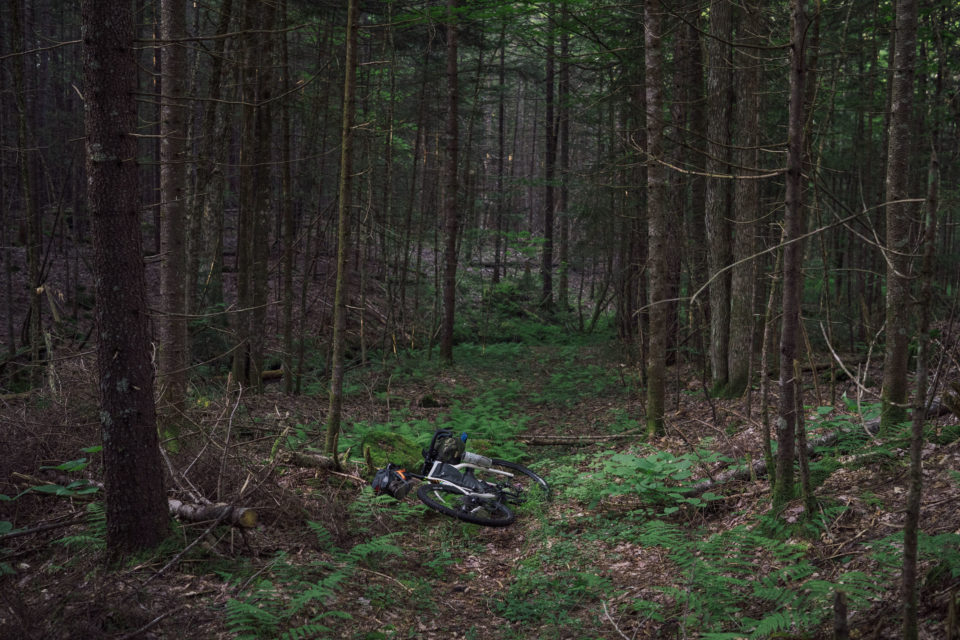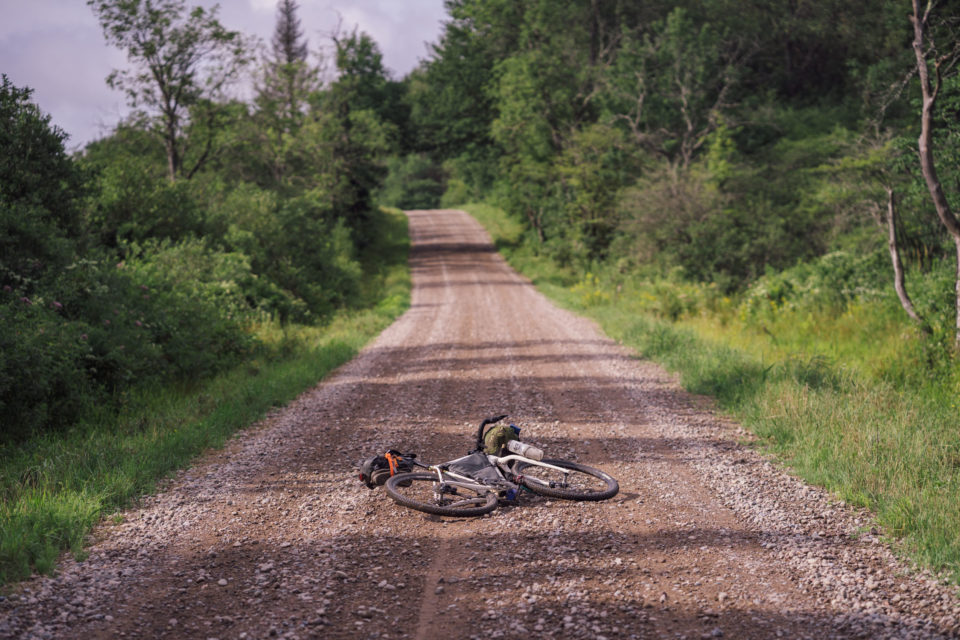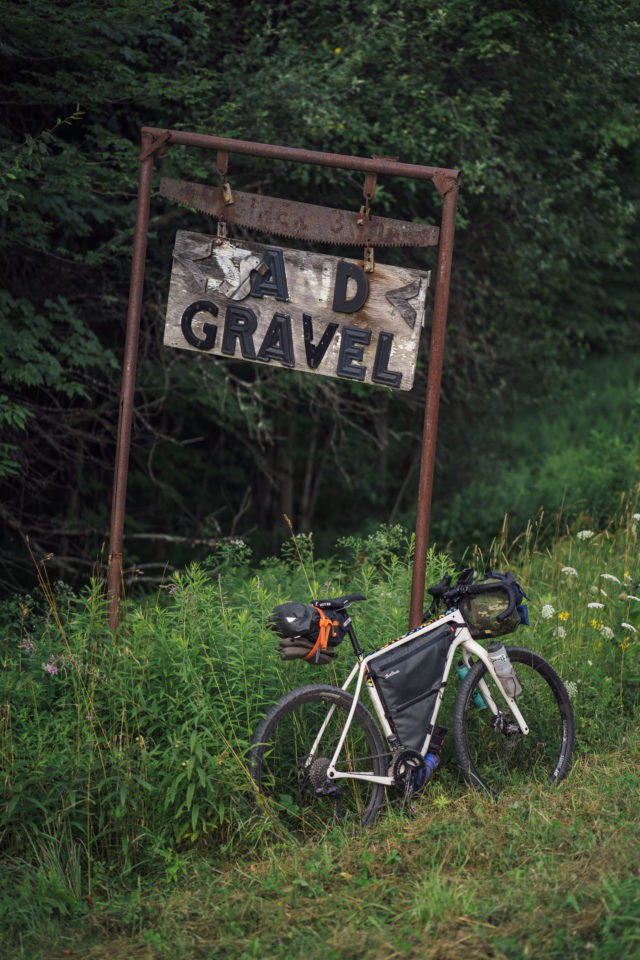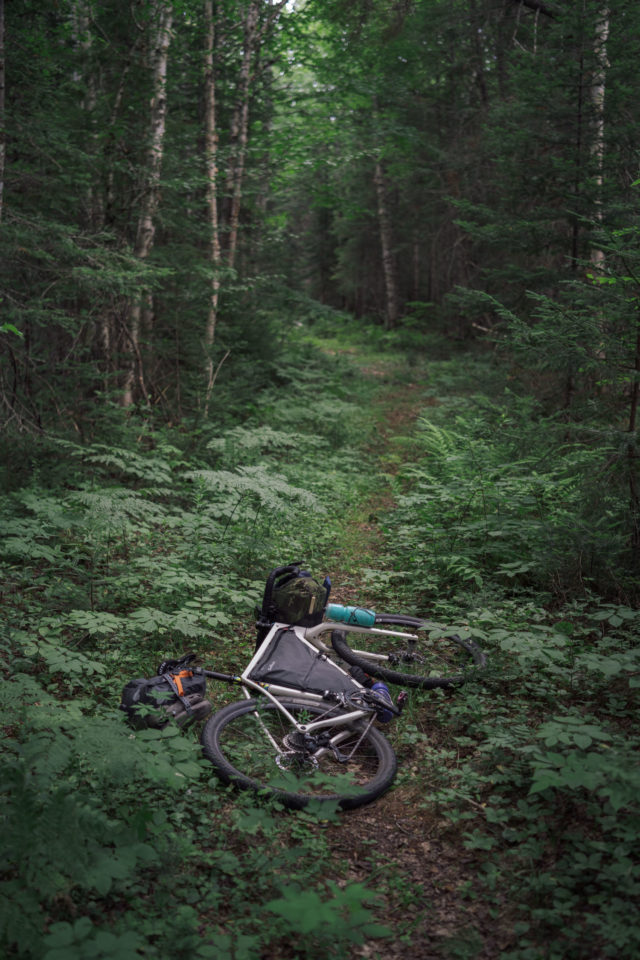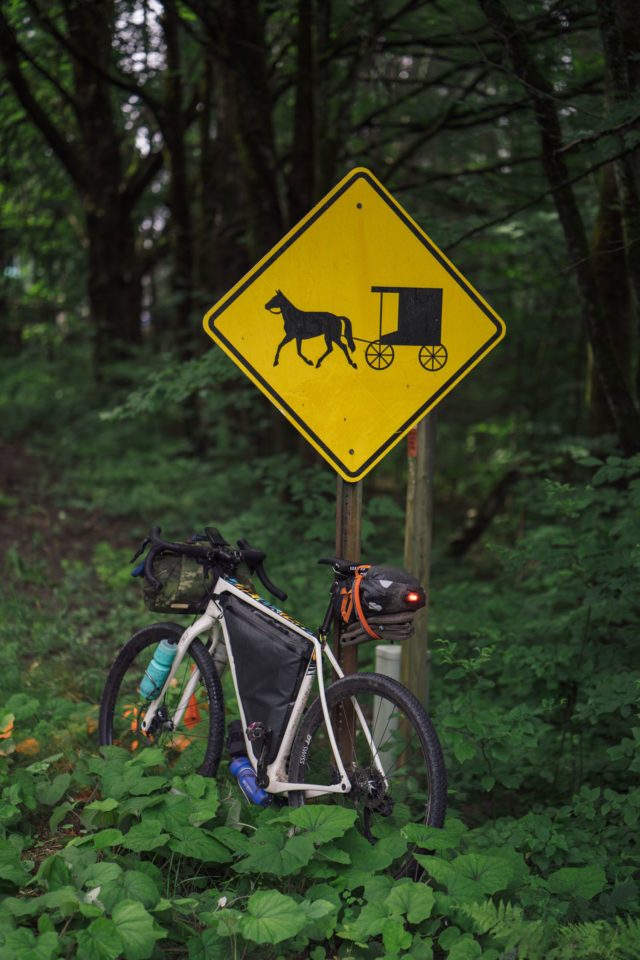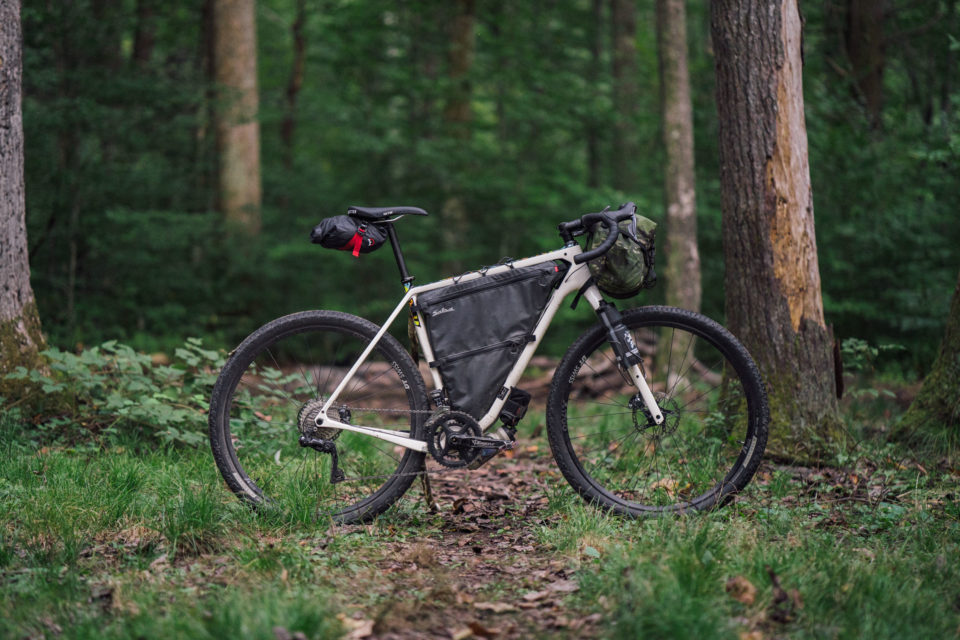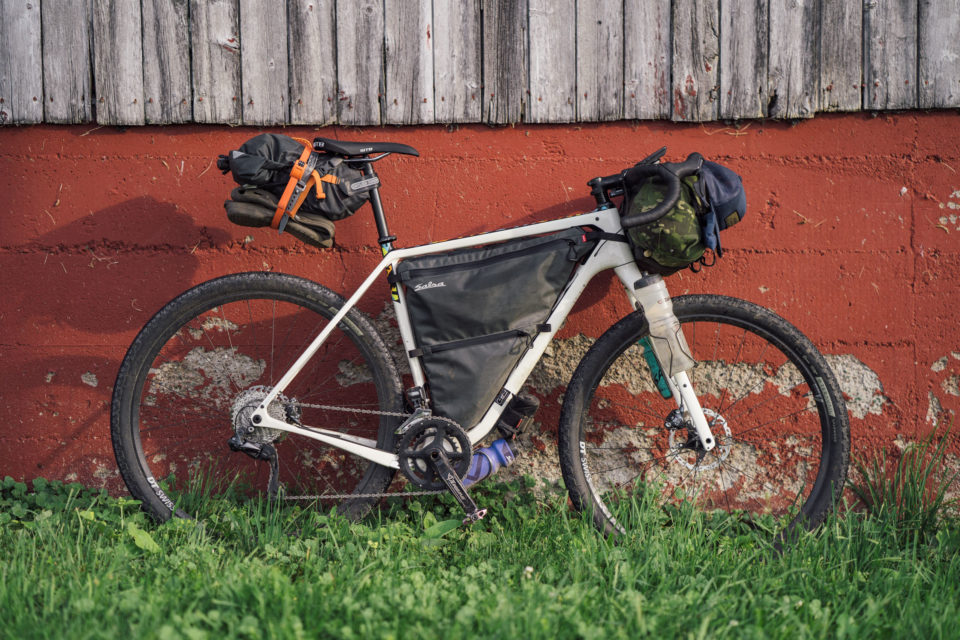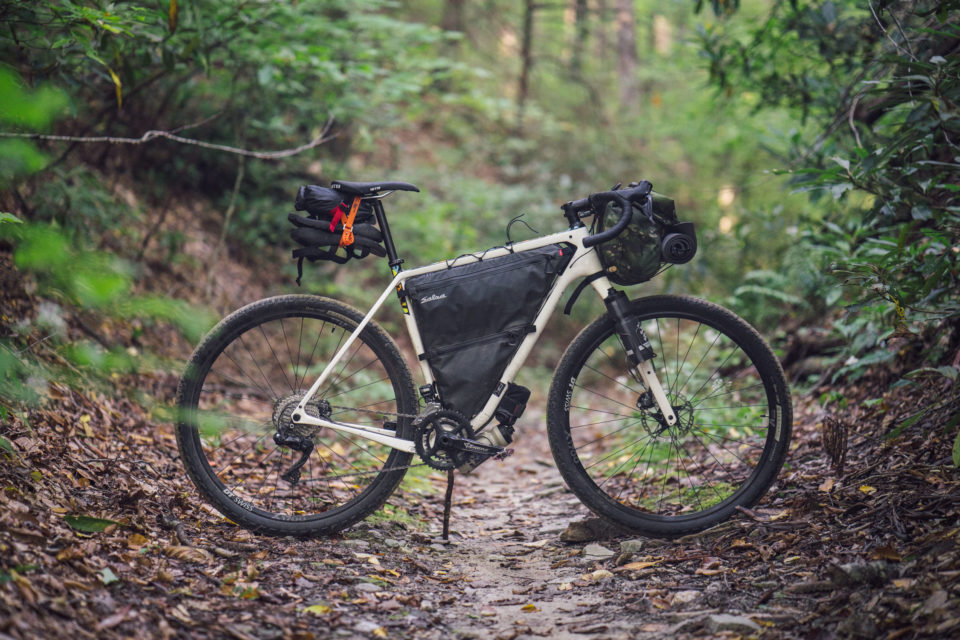Salsa Cutthroat V2 Review + Direct Mount Frame Bag
Salsa Cycles just announced the fully redesigned, next-level Cutthroat V2. We had a chance to put well over 1,000 miles on one prior to today’s launch for this full review. Find all the details, our ride impressions, and loads of photos here…
PUBLISHED Oct 10, 2019
The Salsa Cutthroat was originally released back in July of 2015 at the start of the Tour Divide—2,750-mile bikepacking route for which it was specifically designed. It’s been a wildly successful platform ever since, dominating the field within our Tour Divide race rig roundups and surging in popularity as a quiver-thinning bike for a wide range of exploits, from gravel grinding to dirt road exploration to commuting.
- Highlights
- Frame/fork: Carbon
- Angles (58mm): 69° Headtube, 74° Seattube
- Stack/Reach: 645mm/395mm
- BB Drop/Chainstay: 70mm/445mm
- Bottom Bracket: PF92
- Hub specs: 148 x 12mm (rear); 110 x 15mm (front)
- Seatpost: 27.2mm
- Max tire size: 29 x 2.4″ (rear)
Aside from annual paint updates and build kit tweaks, there haven’t been any significant upgrades to the platform in over four years. But today, at long last, Salsa unveiled the Cutthroat version two, a completely redesigned bike featuring BOOST spacing, a new fork with 32% more compliance, and a lot of other interesting tweaks and details. It’s quite different from the original, and equally as impressive. I had the chance to put over 1,000 miles on the Carbon GRX 810 Di2 model, including a 500-mile bikepacking trip scouting a segment of the forthcoming Eastern Divide Trail. Continue on for complete details followed by my impressions

Before I begin, let me be clear that I was already quite enamored with the Salsa Cutthroat. Whenever anyone asks what drop-bar bike I’d recommend—of which I’ve tried several dozen at this point—there are always two that rise to the top of the list: Kona’s Sutra LTD and the Salsa Cutthroat. They’re two completely different bikes, but they’re both drop-bar 29ers at heart, and both highly capable, comfortable, and very well designed. Of course, the Cutthroat is lighter, more compliant, and comfortably on long rides—and a bit pricier for those reasons. The 2016 version I test rode across Cuba was damned near perfect. In fact, I might even consider to be one of the most important bikes designed in the last decade. But, as always, I have a few criticisms, though the two most severe faults were corrected in the new Cutthroat v2. Theoretically, this should make it the perfect bike. But before I dig into impressions and whether or not that holds true, let’s have a look at exactly what’s changed.
Salsa Cutthroat v2: What’s Changed?
There’s a lot to look at on the new Salsa Cutthroat, so I’ve summarized each major point of evolution with headings and will dig into them a bit more in the ride details farther down.
New Cutthroat BOOST Fork
The most significant change on the v2 Cutthroat is the fork, which Salsa redesigned from the ground up. It has a much sleeker profile, lending its most pronounced benefit—32% more vertical compliance, according to Salsa. While this is a hard number to qualify from behind the bars, I was quite impressed by the vibration dampening in the front. I’ll cover this more in the ride impressions below.
Another major shift is that it now has 110mm BOOST spacing, which adds quite a bit of clearance. Based on my measurements, it should fit a 29 x 2.8” tire, though the official clearance from Salsa is 2.4” for both frame and fork. Better yet, it simply adds a lot more breathing room for normal tires. There’s loads of room with a 2.25 or 2.4” tire mounted, which also offers some protection. If mud gums up the tread, the chance of it gnawing on the carbon fork is greatly diminished. Furthermore, Salsa also added two metallic, abrasion-resistant plates at either side of the interior where mud could potentially damage the carbon. I’ve had this happen on both the original Firestarter carbon fork and the v1 Cutthroat fork, so I was very happy to see this addition.
Correcting one of my points against the Cutthroat from my previous review, the new fork also has three-pack bosses directly on the side of each blade, making it more friendly for various cargo cages, bags, and other such carriers. The forward facing mounts on the old fork were limiting, in my opinion. Here are a few more specs on the fork:
- Backwards compatible with previous Cutthroat frame
- One set of Three-Pack mounts on each leg
- Salsa Down Under rack compatibility
- Internal dynamo routing
- Internal brake cable routing
- 483 mm axle to crown
- 51mm offset
- Aftermarket fork available with 350mm steerer
- Flat mount road brakes
- No fender mounts
- Fork weight with Deadbolt UL axle is 775g (1lb 12oz)
- MSRP Aftermarket $549
Improved 2x Compatibility and BOOST Spacing
Another big change, although not visible at a side angle, is the fact that the Cutthroat now has 148mm BOOST rear dropout spacing. Salsa’s rationale for this move is simply to modernize the platform while increasing drivetrain compatibility without affecting the tire clearance and chainstay length. The most notable benefit here is “Road BOOST drivetrain” compatibility, meaning the Cutthroat is now compatible with a road direct mount front derailleur and shifter with bigger chainrings.
The challenge with the v1 Cutthroat was that as MTB standards shifted to BOOST and 1x; 2x options started to disappear. Drivetrains went from 10- to 11- and 12-speed, and compatibility between MTB front derailleurs and road shifters became challenging. So, while Cutthroat v1 had a front derailleur mount, it was specced with a 1x drivetrain in 2018 and 2019 due to the lack of options.
Cutthroat v2 solves for 2x using 148mm rear spacing, a road direct front derailleur mount moved out to the BOOST chainline, and Race Face BOOST cranks mated to Easton Direct mount rings. The max outer chainring size when running 2x on v2 is now 48T.
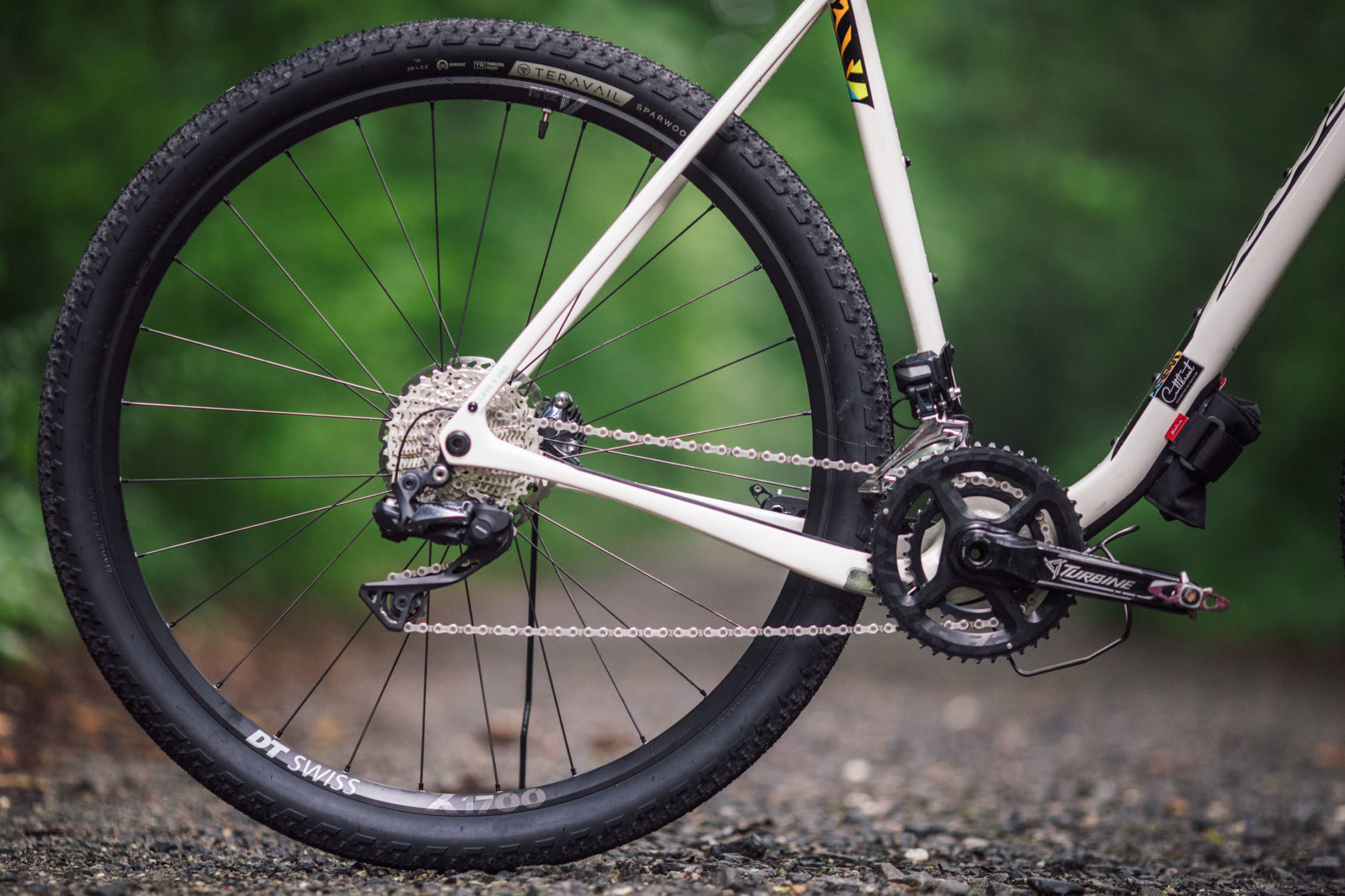
To summarize, 148mm rear spacing provides enough room to increase chainring size while maintaining rear tire fit and chainstay length. With 48/32 and 46/30 chainring combos becoming more popular, and Easton/RaceFace both using the Cinch system, Salsa was able to create a 2x drivetrain with compatibility that’s not outside manufacturer’s specifications. The one compatibility caveat is that the new Cutthroat can’t run 2x SRAM AXS due to the size of the battery and tire fit constraints. Here are the compatibility specifications:
- 1x mechanical using mountain BOOST cranks (max 40T chainring) and road derailleur/shifter/chain
- 2x mechanical compatible using Race Face mountain BOOST cranks and Easton direct mount chainrings (max 50/34T); road derailleurs/shifters/chain; complete bikes ship with 46/30t chainrings
- Shimano Di2 1x and 2x compatible (using mountain boost cranks or Race Face / Easton combination mentioned above)
- SRAM AXS 1x compatible (using mountain BOOST cranks)
Frame Updates
There are a few other frame modifications worth pointing out. Most notably are the subtle shifts in geometry, the most significant change in the head tube angle, from 71° to 69°. In effect, the wheelbase is a little longer, too. Here are a few others changes to the frame:
- Flat mount brakes on frame and fork
- Sleeved internal brake, shift, and dynamo cable routing in frame and fork
- Dropper post compatible with 1x and 2x drivetrains (2x mechanical drivetrains use external cable droppers)
- New sizing with addition of a 52cm size: 52cm, 54cm, 56cm, 58cm, 60cm
Mounts Galore
Not counting the mounting capability on the new fork, the Salsa Cutthroat v2 still has nearly unmatched cargo capacity. On the underside of the down tube alone, the frame now has two pairs of bosses. These can accommodate either two small bottles, or as shown in many of these photos, a small bottle and a Salsa Anything Bracket Mini with a tool roll. Another option might be to carry a fuel canister and a bottle, which is likely how I’d use them on a longer trip. There’s not a ton of space in between the tire and the longer section of downtube, so a standard cycling bottle or small Klean Kanteen is about all that will fit in that position.
The Cutthroat also has a pair of mounts on top of the top tube, as well as front and rear rack compatibility. According to Salsa, it can accomodate a Wanderlust Rack on the rear using the rear rack mounts and Salsa Rack Lock seat post collar. On the fork it can fit the Salsa Down Under Rack. There are no fender mounts, which may bother some people, but I could care less.
Additionally, there are now three sets of Three-Pack cage mounts inside the main triangle (on 54-60cm sizes; two on 52cm), as well as five additional eyelets for what I consider to be the crown jewel of the new v2 Cutthroat: the bolt-on frame pack.
Salsa EXP Direct Mount Cutthroat Frame Pack
With the launch of the new Cutthroat, Salsa also unveiled the new EXP Direct Mount System and Cutthroat Frame Pack, the latter of which sorely needed revision. The original Cutthroat frame bag was…weird, to put it lightly. Salsa made it way too narrow and it simply felt a little cheap. The new bag uses a similar weather resistant PU-coated nylon fabric (400D nylon with TPU lamination and PU coating) and weatherproof zippers.
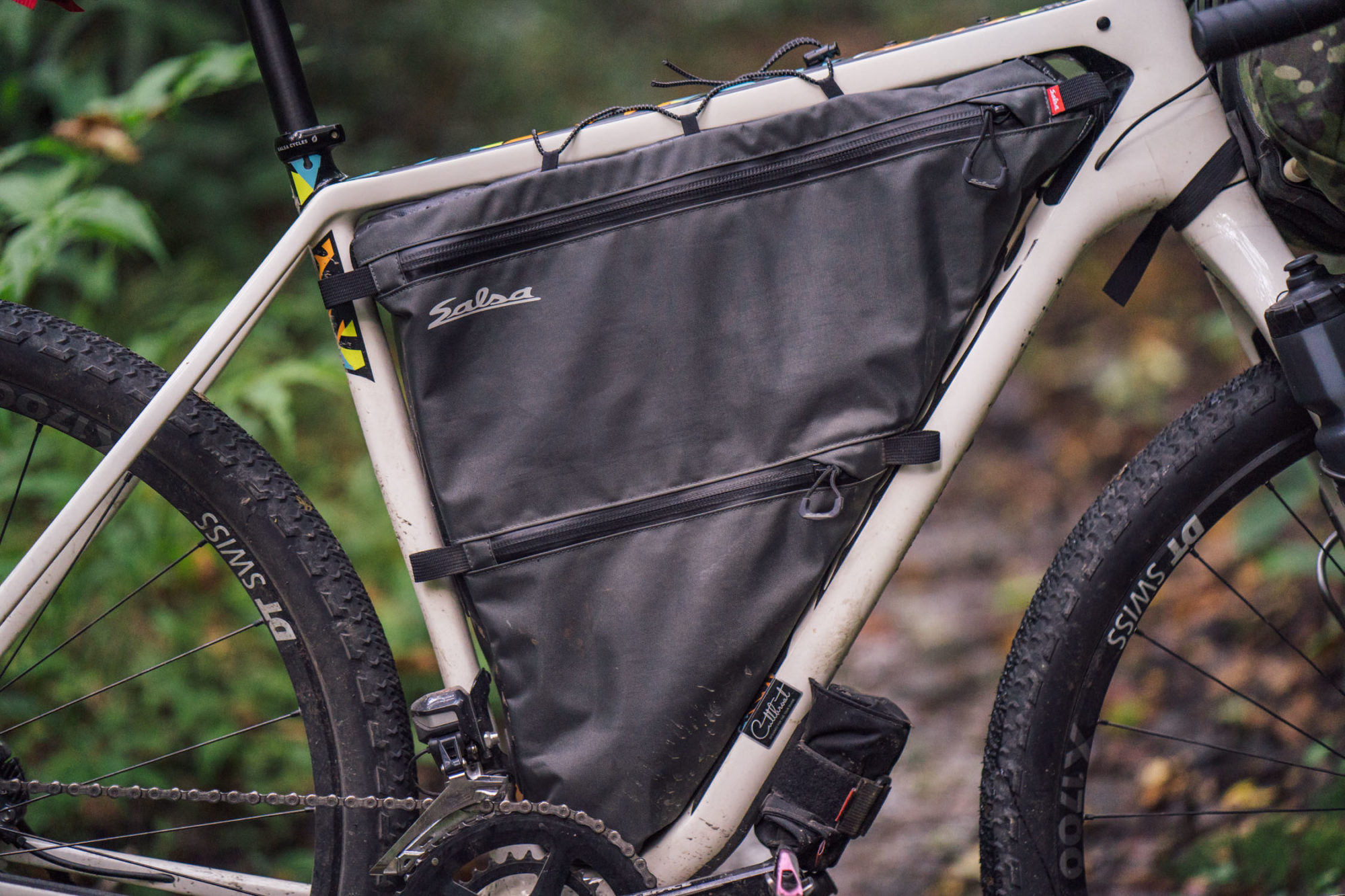
The big innovation is the new Salsa EXP Direct Mount Thumb Screws that allow tool-free attachment to the frame. Each screw has a rubber head that not only holds the bag in place, but also offers a large, grippy disc that you can simply screw in with your fingers. No more fumbling around inside the bag with an allen key. Additionally, the rubberized screw heads won’t scratch or abrade any of the bag’s contents. The screw thread through slotted rubber bases mounted to the bag. This keeps them watertight and secure. We’re expecting Salsa to sell these screws independently and also hope to see other bag makers take advantage of them. The Cutthroat Frame Pack is completely strap-free using 11 Thumb Screws (four in the top, three in the back, and four on the down tube).
The Direct Mount Cutthroat Frame Pack also got a few other improvements. Most notably, it’s much larger—massive, even. It now has two zippers on the drive side that allow access to a single compartment separated by an optional velcro divider. There’s also another separate pocket on the non-drive side that’s about 7 or 8″ deep, perfect for maps and the like. It also has two stretchy mesh pockets for organizing sunglasses, keys, a phone, snacks, or other such items. And there’s an exit port along top tube for use with hydration bladder or lights. Other features include a red interior lining and a padded bottom.
As you can see in these photos, the new Frame Pack also features a lace-up top, which helps the bag keep its shape. It doubles as an easy spot to lash a layer or rain jacket, or dry your socks, if need be. I used the bag without it once, but the top started to get a bit droopy, so it’s better left on to help the bag maintain its structure.
In use, I found the Frame Pack to be very well designed and nearly perfect in both size and function. Some folks might find it to be a little too wide, but I quite like it. With the velcro divider, the two zippers provide easy access to two cavernous areas, or you can leave it out for a single massive space to cram anything and everything. You can even place long tent poles next to the downtube and leave the velcro divider slightly peeled back.
If I had to find a gripe about the bag, I’d say there might be some concerns about the smaller zippers. Being the weakest point on the bag, frame pack zips are notorious for bursting. This is why many small bag makers are moving to burly, big-toothed zippers. However, Salsa chose the smaller waterproof zips to keep it weatherproof, but it’s still a cut and sewn construction, so it’s not fully waterproof. However, I’ve found it to be highly water resistant.
The Salsa EXP Direct Mount Cutthroat Frame Pack and Thumb Screws will be available early this winter. We’ll be sure to update this when we get our hands on the production versions of the screws and get final pricing.
- Model Tested Salsa EXP Direct Mount Cutthroat Frame Pack
- Weight (as tested with Thumb Screws) 1.42 pounds (646 grams)
- Place of Manufacture China
- Price TBD
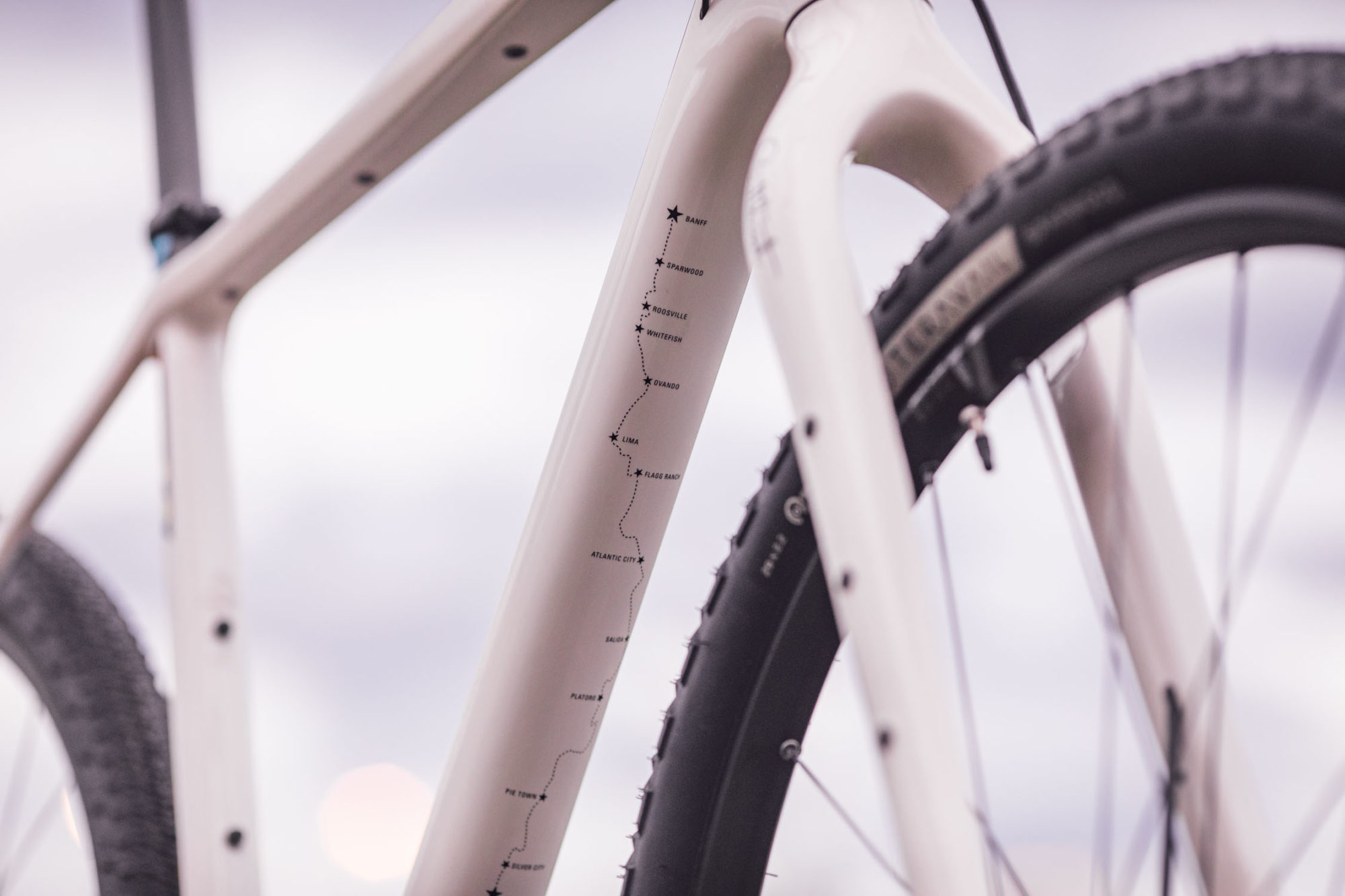
2020 Salsa Cutthroat v2 Models
There are four models of the 2020 Salsa Cutthroat: the Apex 1 ($2,699), GRX 600 ($3,299), GRX 810 1x ($4,199), and GRX 810 Di2 ($5,799). All have the same carbon frame. I tested a pre-production build largely based on the high-end Di2 model. Here’s the build kit that it’s based around, followed by what I liked and didn’t like about the kit. Note that you can also get the frameset only for $2,199.
2020 Salsa Cutthroat GRX 810 Di2 Build Kit
- Frame/Fork Salsa Cutthroat Carbon Deluxe v2
- Wheels DT Swiss X 1700 Spline (22.5IW)
- Tires Teravail Sparwood 29 x 2.2″ Durable/Tubeless
- Handlebar Salsa Cowchipper Carbon
- Headset Cane Creek 40
- Stem Salsa Guide
- Brakes Shimano GRX 810 Hydraulic/160mm rotors
- Crankset Race Face Turbine w/Easton DM 46/30T Chainrings
- cassette Shimano HG800, 11-34T
- Deraileur(s) Shimano GRX 815 Di2
- Shifter(s) Shimano GRX 815 Di2
- Saddle WTB Volt Pro
- Chain Shimano HG701-11
Admittedly, this is the first time I’ve used electronic Di2 shifters and derailleurs. While it wouldn’t have been my choice for a bikepacking-specific build, I was quite impressed and may have changed my tune. It’s incredibly smooth, stays in tune, and the battery seems to last forever.
Otherwise, my opinion on the GRX 810 Di2 build kit was generally good. The Cowchipper bars are great and the 46/30T gearing combo worked well for both unloaded and loaded riding. Overall, I have just one complaint about the kit: the rims that Salsa specced on this build (and all the others) are too narrow. They’re either 22.5mm internal width (DT Swiss) or 23mm (WTB i23s), far too narrow for larger tires in my opinion. I generally like the Teravail Sparwood 2.2” tires that come on each of the Cutthroat builds as they’re super fast and can handle most terrain pretty well. But they can be a little squirrely in loose rubble and chunky gravel, a characteristic that gets worse on narrow rims. These rims simply aren’t wide enough for them and I’d prefer a 27mm+ IW for versatility and sidewall support.
On the Trail/Gravel/Dirt
As mentioned, I’ve now racked up over 1,000 miles on the new 2020 Salsa Cutthroat, which, as usual, is what I consider an adequate amount of testing distance before putting pen to paper. The first few rides were in Vermont—three back-to-back gravel loops for Joe Cruz’s 50th birthday, nearly 150 miles worth over three days with a mad amount of climbing per Joe’s sadistic wishes. He passed out stickers that read, “The fun starts when you stop having fun,” a proper mantra that I affixed on the Cutthroat’s top tube.
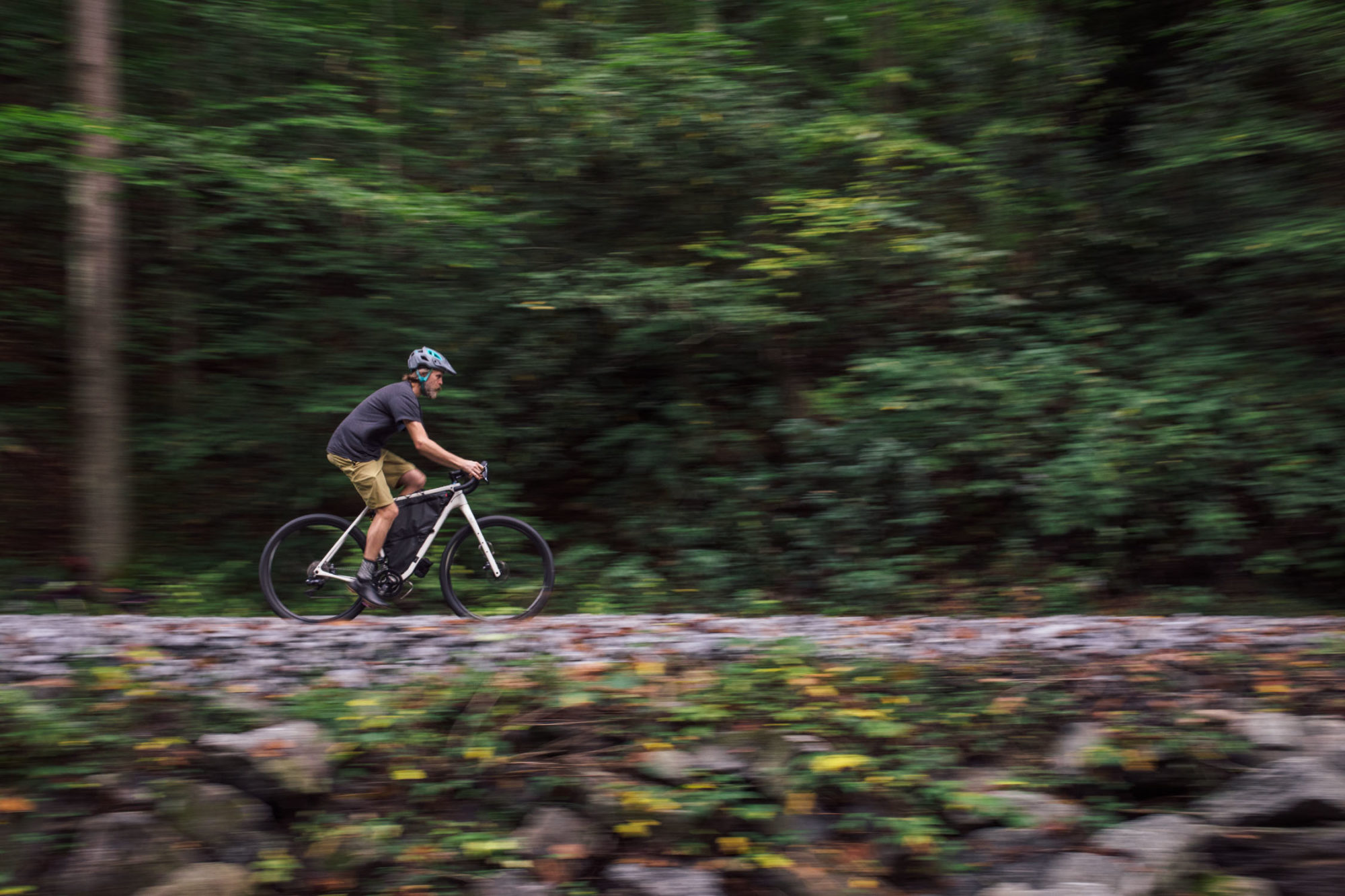
When pedaling out of the campground onto Vermont’s gravel roads, the first thing I noticed was how smooth and efficient it felt. As I mentioned in the original review, the VRS (Vibration Reduction System) seemed a little like marketing snake oil when I first read about it, but the thin seat says really do a great job of toning down the vibrations and small chatter that dirt and gravel dish out. The new fork seems to have balanced the front of the bike with its rear-end, adding a noticeably more forgiving feel that kept my hands comfortable on long rides.
I often found myself riding pretty far off the back of the group of younger and faster road cyclists during those three days, but as soon as we hit Vermont’s notorious class IV roads, I’d catch up, clearing mud, rocks, and other technical bits that leave most gravel bikes struggling. That’s what I love about this bike. It’s a mountain bike at heart, but it also does everything else extremely well and feels at home in almost all circumstances, barring punishing singletrack and ultra-rugged terrain.
After that three-day gravel event, I tackled nearly 500 miles of mixed terrain while scouting a section of the Eastern Divide Trail through Vermont and New York state. That route presented everything from smooth gravel to rugged rock roads to endless pavement and bike paths. As expected, the Cutthroat was the ideal choice for this type of trip. Aside from my complaint about the tire/rim combo, my only other gripe was with the saddle. But that’s just a personal preference. The v2 Cutthroat feels great while loaded, as did the last model, and it’s just as capable and stable.
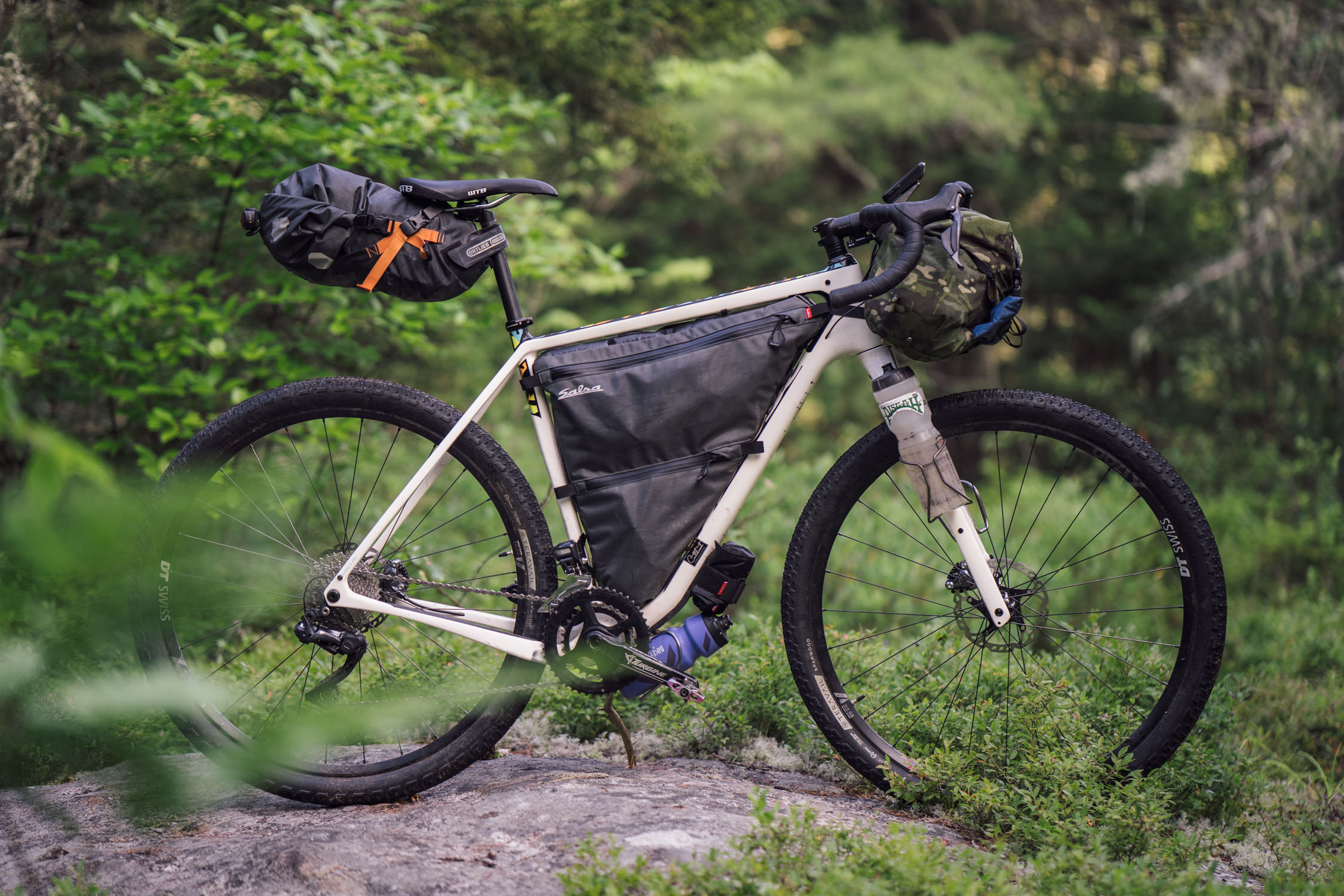
Pros
- Carbon frame and fork continue to be incredibly comfortable, compliant, lightweight, and fast
- The lines and aesthetics of the Cutthroat v2 are much more appealing than v1
- Continues to be one of the most confident and stable drop-bar 29ers on the market
- Nearly unmatched cargo carrying capability
- New bolt-on frame pack is very well done
Cons
- If I had one frame update wish, it’s that the Cutthroat would have a flip chip in the rear dropout, allowing for a shorter or longer chainstay depending on ride and tire choice
- For this build, I’d like to see wider rims; for some reason Salsa specced the 22.5mm inner width Spline rims instead of the 25mm. A 27mm IW would be ideal.
- Model Tested 58cm Salsa Cutthroat Carbon GRX 810 Di2
- Weight (as tested with frame pack) 23.69 pounds (10.75kg)
- Weight (without frame pack) 22.27 pounds (10.10kg)
- Place of Manufacture Taiwan
- Price $5,799
- Manufacturer’s Details SalsaCycles.com
Wrap Up
As evidenced in all these photos, Salsa dramatically improved the aesthetics of the Cutthroat. It’s a really handsome bike with sleeker lines than those on v1. And you can clearly see that the cargo capability has improved with the latest version, too. It has a bigger frame triangle and all the mounting points you could hope for—in all the right places.
What you can’t see is how this bike performs in comparison to its predecessor, a bike many folks might have thought was already perfect. Considering I rode the v1 Cutthroat three years ago, it’s challenging to pit one against the other on the ride alone, but I’m happy to report my love for the Cutthroat platform was once again rekindled. It’s truly the most comfortable and stable drop-bar bike I’ve ridden to date, and it still feels fast.
As mentioned, the build kit isn’t without its cons, particularly the choice of wheels/rims. Aside from the dream of having some sort of flip chip dropout system, I might just consider the frame itself to be completely dialed. Without fault, even. I’m sure there will be naysayers who continue to stand against the pressfit bottom bracket, but I didn’t have an issue with the v1 (which uses the same BB) after 1,400 miles, and I haven’t had an issue with this one either.
So, is the Salsa Cutthroat v2 the one? I personally have a preference for flat bars, and in a cruel dystopian world where I had to choose just one bike for everything, it would no doubt be a hardtail. However, as far as drop-bar bikes, this is definitely it. The Cutthroat handles gravel, dirt roads, pavement, and smooth trails as well or better than others in its class (and a few other classes), and it has the feel of a mountain bike, which is comforting to me. With that said, if I had to have just two bikes, this would probably be one of them.
FILED IN (CATEGORIES & TAGS)
Bikepacking Bikes
Bikepacking Bags
Drop-bar & Gravel Bike Reviews
salsa-cyclesPlease keep the conversation civil, constructive, and inclusive, or your comment will be removed.







